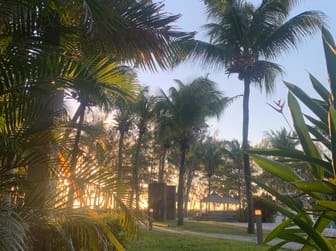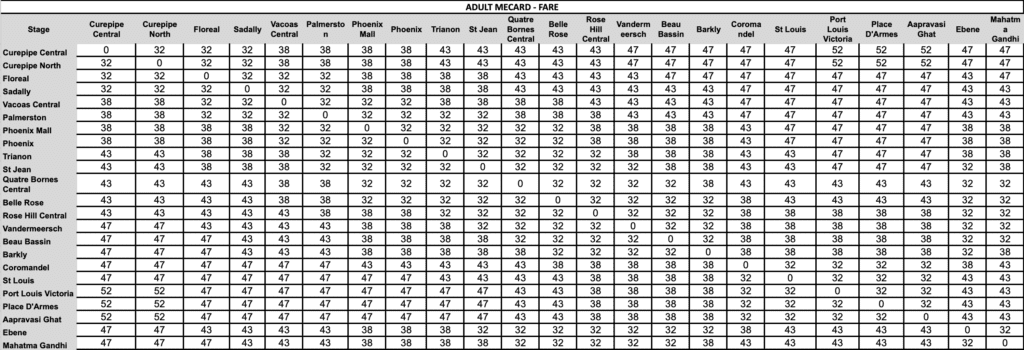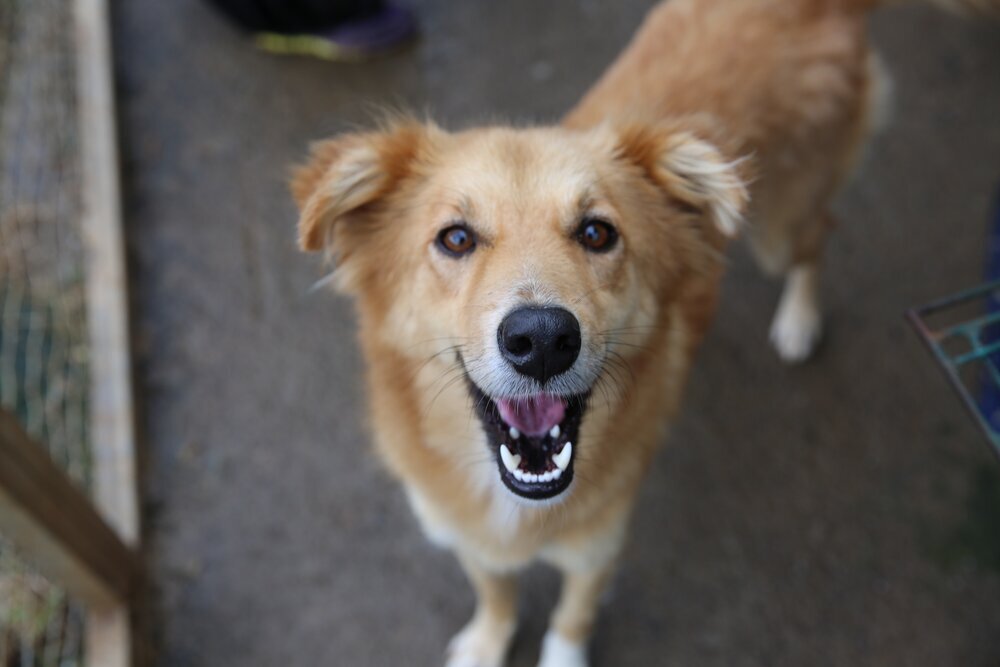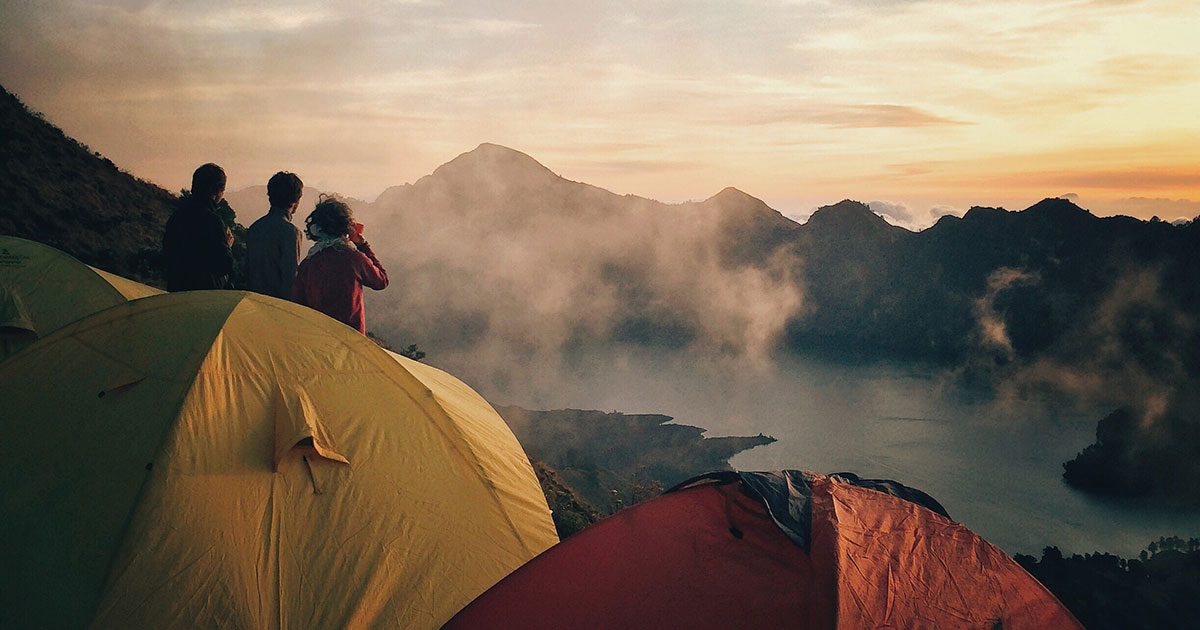Mauritius- 101 Budget Backpacking Guide

There are many travelling guides written form a female travellers POV, however, as a 22 year-young, unvaccinated female from South London, travelling the majority of Africa, during a nightmare-like time of power & plandemics, 5G tower forests, where the future of our freedom is unclear and where data and technology are prevalent in every crevice of the world, I decided to take the plunge and finally begin my travelling journey. This guide is applicable to every type of traveller and anyone who has the travel itch! However, there are still much less female-directed travelling guides online so this is one for us warrior goddesses especially (but no one's excluded!). Many people will say you can't backpack Mauritius but I'm telling you that it is entirely possible and entirely worth it- so don't go sleeping on the secret gem that is MAURITIUS!
This bible is a compilation of my 5 months 19 days (172 days) of learning, growing, experiencing, feeling, connecting and celebrating Mauritius. I present it to you with warmth from my heart and with the intention to encourage, benefit and educate you on the little beautiful paradise island of Mauritius.
A little about Mauritius:Mauritius (MRU) is a small island off the East coast of Madagascar, about 2000km off the Eastern cost of Mainland Africa. It has a population of under 1.3 million and is 2,040sq km (790sq mi) in size, meaning it is tiny! Comparing it to the UK, Mauritius is 119 times smaller in size. It is one of the smallest countries in Afric and is also comprised of the some neighbouring islands such as Rodrigues, Agalega and St Brandon. Reunion Island also neighbours Mauritius but it counts as different territory. Reunion Island is French owned whereas Mauritius is now *TECHNICALLY* British owned. The currency is Mauritian Rupee (RS) and exchanges at roughly £1 ($1.31) ~ 50RS. Mauritius is one 3 countries with the highest Hindu populations in the world (amongst Nepal and India, respectively), and is the African country with the highest Hindu population. Mauritius' local language is Creole- which is a broken French dialect, however, the official language is English, with French being widely spoken and equally used (if not more). Signs are written in English and they drive on the left lane of a road. Summer runs from November to April and Winter runs through May to October. Mauritius is 4 hours ahead of the UK (GMT+4) and their dialling code is +230 with phone numbers beginning with '5'. Mauritius is generally a peaceful country with many different ethnicities and religions living harmoniously. However, just like all countries, it's government and policies are corrupt and ridiculous (abortion is illegal and in SOME instances possession of weed is treated harsher than murder).
Rabbit hole diverted, on with the guide!
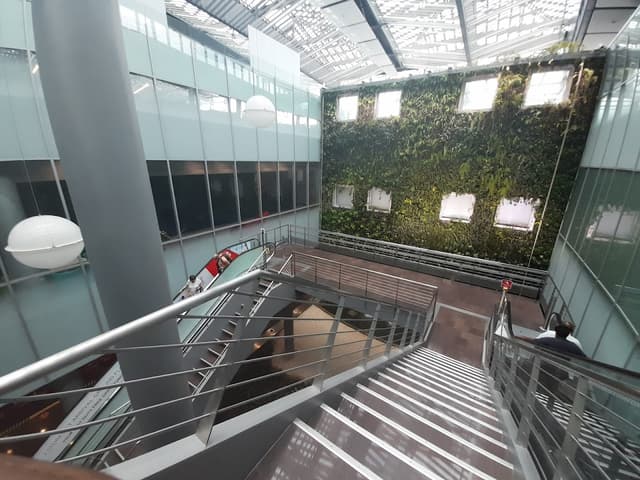
Travel and Transport:
Here is the number of Cedric the taxi guy I used from Tamarin to Ripailles- +230 5744 6223.
In Mauritius (and other African countries generally), other incoming drivers will flash you to alert you there are police sitting ahead. I had never seen this until Mauritius and I think it is a great idea to keep everyone informed. This doesn't happen in the UK but I am bringing this trick back with me (if I ever do return!) and will try to make it catch on... kinda like trying to make 'fetch' happen... Of course, there's the risk that someone is flashing you because you left your full beams on or because you have a visible issue with your car, but normally it's a friendly warning to you, against the police. So keep your eyes peeled. Speeding is never a cool thing to do (I've been done for speeding twice), so always drive carefully, especially because the roads aren't the smoothest or safest. My driving instructor always told me 'Remember: the speed is a limit, not a target'. Wise words.
Vehicles on the roads are constantly beeping at you at others, so get used to jumping out your skin! It was overwhelming and confusing at first, but I quickly learned to ignore any honks unless I was waiting for a bus or looking for a taxi. Once you look up and make your contact, they assume you want their services to will pull up next to you. Mind your business and make eye contact only when you need that bus or taxi. People in Mauritius also overtake all the time, but now I've noticed it is a generally African thing to do. They will just beep as they're overtaking you so be aware of what's coming up behind you if you're driving (Mauritians drive on the left hand side of the road just like UK). The roads in Mauritius seldom have street lights to be EXTRA CAREFUL when driving at night too as they don't have curbs and some roads have massive drops onto sugar cane fields. It was nice not having to worry about so many cyclists though! (If you know, you know).
Another point to make about Mauritius' transport is that you don't need to be at a bus stop to catch the bus. As long as you're facing the right direction of the journey, you can put your hand out and they will stop for you. A bus literally stopped in the middle of a crossroad for me to board which was hilarious! So you don't need to worry about not making the bus stop in time- this saved me on many occasions.
However, the main issue with the bus transport in Mauritius is that they don't run on any kind of fixed schedule. The bus system is divided into 'Privately Owned' and 'Government Owned'. The government owned buses are blue in colour and have a rough time schedule. however, I've only ever seen their timetables in the actual bus itself, rather than at a bus shelter. This obviously isn't helpful if it's the first time getting the bus and you don't know the times! There is a website which has Mauritius bus time tables in every area (link below). It's a confusing website and I didn't get much help from it but it's a resource nonetheless if you can crack it! A Couchsurfing buddy in Mauritius- Fabrice- reminded me of the very European ways of viewing public transport. This way eye opening for me as it was the poignant truth. In UK, we have buses running every 2/3/4 minutes which are trackable on an app. There's clear timetables on what are very obvious bus stops/shelters and they run on time, all the time. Fabrice's comparison opened my eyes to the adventures which lay ahead of me, jumping on buses and figuring out the route myself. This as a big step for me as I'm someone who likes to plan and organise my journeys, avoiding any chance of surprise or lateness. But now I was in Mauritius, I had to begin unravelling my European ways and this was a great start!
The government buses mainly in the South and don't run as regular as the privatised buses. The privatised buses are fantastic and are the coolest buses you'll ever see. Because they're privatised and owned by local individuals, they have the ability to decorate and spray paint their buses as they want to. They're really colourful and cool to look at. Many of the buses have the owners childrens names stickered on the back which is a cool shoutout. Obviously there are a lot of references to Lord Shiva (a Hindu God) as well as other Hindi phrases and quotes. The privatised buses are more frequent, and depending on the area will depart between 20-60 minutes. They also play banging music (thanks to the AUX controller) and are crazy cheap. Using the Mauritian buses are a cheap and fun way to explore the island. I would really recommend them- they are totally worth it! The most important thing here to remember is that due to the lack of time tables, it's always best to just speak to the locals and ask when the bus is due and what direction it is going. The buses do have a direction of the front of the bus, but you'll have to be familiar with the Mauritian map to know what direction you want to go. The easiest and purest way to figure it all out is by good old fashioned face to face communication! Speak to the locals and suss out the transport. You might even make a friend!
Once you've decided what bus to board, you take your seat and wait for the bus controller to give you your ticket. When it's time, the controller will ask you your destination. Tell them where you want to go and they will print you a ticket. They only sell single journeys so don't expect to get a return ticket. The controller never comes around staright away, normally after 1 or 2 stops. I've never tried it, but technically you could exit the bus before they ask for payment (if your journey is short), and not end up paying, but we're not here to exploit, we're here to support.
Asides from the small taxis and buses, you could also use a 'Contract Bus' to get around. A contract bus is a privatised combi shuttle bus (they look like bullet vans). These are normally owned by locals who use the vehicle for chartered school runs but can give you a lift as a taxi if they are going in the right direction or if you pre-book. The use of contract buses are also hella cheap.
The final way of travelling in Mauritius (as well as walking or cycling) is by using the Metro. The Metro is very new and opened in 2017. For many Mauritian locals, the Metro is a weird concept still, however, it benefits the city workers really well. It only travels through 5 major towns (Port Louis, Vacoas, Rozil, Curepipe and Quatre Bornes), so it is only worth it if you are starting and ending in one of these places. Tp use the Metro, you either need a 'Metro Express Card' (a pre-paid electronic card) or you can buy a single-use ticket. As a tourist, the single use ticket is the obvious choice. The Metro usually runs Monday to Sunday 06:00 to 22:00, however, this changed to Monday to Sunday 06:00 to 19:00, recently due to the plandemic, and is unclear when/if it will change back. You can use this website to work out how much your journey would cost (link below). The prices are cheap but more expensive than the buses. The Metro is clean and spacious and never overly busy and is a nice way to travel through the main cities, while dramatically staring out the window.
Travel and Transport completed, onto the food!
Food, Drink and Eateries
Anyone with a taste bud is guaranteed to enjoy the food in Mauritius. Because is it such an ethnically diverse country, there is a vast choice of cuisines and food to pick from. Traditional Mauritian food consists of some of the following: spicey and non-spicey curries (veg and non-veg), samosas (veg & non-veg), dholl puri, briani, satchini, lentils and 'gato pima', with 'mine boille/frite' (pronounced 'min bwee/frit') (boiled/fried noodles) and 'riz frite' (fried rice) being influenced from the Chinese population. This list is just a fraction of the delicious food you can find everywhere across the island. Due to the heavy Hindu population in MRU, many food dishes (eat in or takeaway) are vegetarian. Meat lovers don't run away! There are PLENTY of meat dishes commonly available and meat is still a massive part of Mauritian diets. I just pointed out the vegetarian options as being plant-based myself, I found it extremely easy to eat there. Some could say I found it TOO easy (let's just say I gained a few pounds over there). When you think of travelling within Africa as a vegan, you assume there won't be many vegetarian options, but there are many. In fact, it is clear to see that veganism and vegetarianism began decades ago in Africa. So I have to give MASSIVE props to Mauritius for their vegetarian culture. Due to Mauritius' obvious location, fish and seafood is widely available and always extremely fresh (and cheap)!. If you're fanatic about fish, do not leave there without trying freshly caught tuna and barracuda.
'Gato Pima' or Gateau Piment are deep fried balls of bliss. Basically you mix chopped fresh red and green chilli with split peas, onion, corriander and salt and roll them into balls and deep fry them. They are very cheap street food (fairly calorific too) and you can buy them from most street vendors for 4 for RS10. Curry Burry is a dish made of cut up gato pima, mixed into a saucey masala curry. The gato pima softens and creates an innovative curry!
Deep fried courgette is also worth a try and is available from all street vendors for cheap. It is literally deep fried courgette... Deep friend chillis is also popular over there. They're nice but plain plus I'm not a fan of deep fried things, which leads me to the ultimate deep fried food of all- deep fried bread. It is what it says! Available from all street vendors for RS10. Enough said.
Half moons are a traditional snack (usually served as a starter at special occasions such as weddings). These deep fried 'crescent-shaped' snacks are filled with creamy cheese and vegetables. These are absolutely banging but not found at street vendors very often. I always tended to eat homemade half moons when I went to visit people and never saw them being sold in public- an auspicious food indeed. Pair with chilli sauce for a midnight munchies snack.
Dholl Puri or Dahl Puri is one of my favourite things about Mauritius. For a food so cheap. They are so filling and always delicious. I like to think I've become a dholl puri connoisseur and I wear that proudly. Dholl puri is a classic Indo-Mauritian food and is yellow split pea flour made into thin wraps (with some dahl inbetween too) with 3 vegetarian curries inside and the choice of pima (chilli). They are one of the tastiest and flavoursome foods you will ever eat. What makes it better is that sometimes a man with a box on his bike, rides down the road shouting 'DHOLLL PURIIII, BRRRIIANNIIIII'. If you see one of these men, trust them with all of your heart and BUY THEIR FOOD. Die knowing you had no regrets.
Kheer is a traditional meal, usually served as a breakfast during day 2 of a wedding celebration. Kheer is literally an Indian version of rice pudding, but with cinammon and other spices added. You also eat Kheer with roti (the wraps made of dahl). Normally you have the kheer cold but the puri can be hot or cold. It's as traditional as you can get.
'Chou-chou' or Chayote is a green, round vegetable which is peeled, sliced and boiled to create a curry dish (even though no curry spices are used). Most Indo-Mauritians will call most dishes a curry, so I do too. It is a key curry you will see. The vegetable is called Chayote but it is used to create the dish chou-chou. Side note: be careful how you pronounce chou-chou, as shoo-shoo means pussy in Creole. I got laughed at many times because of the way I pronounced it. Choose your words wisely, you don't want to end up with the wrong thing. Chou-chou is one of the curries omnipresent in the traditional '7/sept Karis'.
Kari Banane is also a key dish in MRU. They take unripened bananas and grates them into small, thin strips (similar to how mango is grated in Kutcha). Then cooked with spices like garlic, turmeric and mustard seeds. As someone who despises bananas, it actually doesn't taste of banana and is quite delicious. I was tricked into eating it though... Banana curry is also always included as one of the 7 Karis.
Pani puri are hard fried crunchy balls filled with a potato curry and served with tamarind sauce (satchini) or a mint sauce. Also very cheap from street vendors and available from most eateries, it's always fun indulging yourself in a few when visiting a local market- they always taste the best from the markets. These normally cost RS5.
Chana puri is a street snack which is traditional in MRU. They are deep fried hard balls full of Chana Dahl (yellow split pea powder). These are usually served with rougaille (a homemade tomato puree ragu).
Samosas are very popular in Mauritius. For those who don't know, a samosa is a deep-fried triangle-shaped pastry with a filling of either curried vegetables (namely potato, carrots, peas and onion) or curried meat filling (namely chicken, lamb or beef). I also noted that Mauritius sell a different type of samosa too- a cheese and sweetcorn one. It's decent but not got much flavour unless you dip them into chilli sauce! They're a bit basic and not as tasty as traditional vegetable or meat samosas. Usually 2 for RS10 on the streets.
Boulets are a Cino-Mauritian type of dumpling, usually filled with fish or chicken (fish seems more popular in MRU). Because I am veg, I didn't try these, however, all my local friends and cousins would eat these when we went to a market out and about. The boulets are steamed and served in a chilli broth soup. These are easily found in Mauritius- eat them as a snack or have them with noodles for a meal.
Kari pomme de terre (potato masala) is also one of the traditional '7 Karis'. It is boiled potato cooked with haricot beans and other spices. It's delicious and is a common curry used on a daily basis, not just special occasions. Potato dishes are very popular in Mauritius as potatoes are one of the common crops grown in the fertile land.
Kari Brinzel is a non-saucy aubergin curry, also always included in the traditional 7 Karis. I am a hoe for aubergine so obviously, I appreciated the dish massively. I noticed the dish didn't seem as popular amongst the younger generation as quite a lot of people I met seemed to dislike the vegetable. At least it leaves more for me. This dish is cooked with mustard, cumin, onion and chilli.
Kari Haricot is a curry cook with haricot beans. It is also known as Haricot masala and is cooked similarly to the 'kari pomme de terre', but with more haricot to potato ratio. Another one of the traditional 7 Karis, this dish is basic but always comes through on flavour. It's nice served with rougaille (avec soy), bitter gourd, a bowl of lentils and a roti.
Kari Giromon Touffe is a delicious and simple pumpkin curry but technically not a curry at all. Pumpkin is boiled, mashed and cooked with garlic, chilli, corriander, and ginger. This is another dish you'll see Mauritians eat on a regular basis. Pumpkins also grow well in Mauritius, with a high supply in all areas.
Kari Zak is one of my favourites and is also one of the mighty 7 Karis. 'Zak' is Creole for jackfruit, which means yes- Mauritians have been using jackfruit in their diets decades before it became 'cool' for vegans in my Western world. The zak actually has to be unripe to use it in the kari which also means you see loads of big ass jackfruits hanging from trees everywhere. I think they're a very aesthetic fruit. The jackfruit is cooked with garam masala, turmeric, ginger and cumin. I's definitely worth a try when you go.
The almighty 7 Kari's are normally served with pickles and chutneys. There is a pickle called 'zassar pima' made of sliced up green chillis, mustard seeds, garlic and salt which tastes UNREAL. Kutcha is also another thing I probably got fat from. The right kutcha is like heaven in a jar. Kutcha is grated up unriped mango, sprinkled with salt, left out to dry and pickle in the sun for a few days, then mixed with mustard seeds, garlic and other spices, lemon juice and oil. Mix it together, let it marinade for a day or so and you've made yourself kutcha! It is a key pickle found in Mauritius, however it is crazy high in salt so eat it in moderation- don't do what I did and eat a whole jar of it in a week. Again- no regrets. Bilambi is also a similar pickle but made from starfruit. The best part about 7 Karis? It is served on banana leaf paper and you eat it with your hands. The karis traditionally used to be served on real banana leaves but my Uncle said there wouldn't be enough leaves for people nowadays!
Roti or Rice? Both of course! Rice is rice. Actually the government subsidises rice over here so you can buy a 5kg of 'parboiled' rice for RS150. They have different 'grades' of rice, e.g 10% broken, 20% broken, 25% broken, each with a different price. The more broken the rice is, the cheaper it is and the brokeness refers to how polished the rice is. The less polished the rice, the cheaper it is and therefore is for the 'poorer' man. Roti is used to describe a plain flour bread, and is very thin and soft. Don't get it confused with farata though. A farata is cooked with oil so they stay thick and soft, compared to rotis, which dry up when exposed to the air (as they are dry fried and much thinner). Households tend to either be a roti family or a farata family, you never got offered both unless you have the choice at a street vendor.
Rougaille is a mild tomato based sauce dish- it literally translates into 'ragu'. Rougaille is usually cooked in with chunks of soy. The rougaille is made with paprika, garlic, chilli and ginger. You boil the solid chunks of soy and then drain them and squidge them together to remove the water. Then mix them in with the rougaille and let them cook together for a little bit. A standard Mauritian dish and is one of my favourites because it gives me Italian vibes.
Bitter gourd is an okra dish. Okra is better known as 'lady fingers' over here. They're sliced and fried with mustard, turmeric and chilli spices. They taste bitter (hence the name) and can be eaten hot or cold (when they're cold they almost taste like a pickle). These are one of my favourite dishes for reals and are definitely worth a try!
Roti, farata or rice? This will be one of the biggest battles you face while travelling in Mauritius. You might be forced to eat just one and not get given a choice, but when I knew dinner was being prepared, I would always be asked whether I wanted farata or rice. I always opted for farata as I prefer breaking up the farata and using it to soak up the curry, however after 2 months of eating farata daily and seeing me become a 'fat-ata', I switched to rice as it's lighter. In the end, I was sick of the carbs and just stuck to the curries. I'd go crazy once in a while and opt for to roti, but when Chachi makes the farata that melts in your mouth, sometimes you can't resist them.
The tap water in most places in Mauritius is drinkable, whether it's cold or not, and it tastes weird or not, is another thing. In a Mauritian household, you will most likely get offered bottled water as most don't enjoy the taste of their tap water. I personally found it fine to drink and drank it throughout the 6 months in all different areas of the country (in fact, I drunk the tap water in every country except from in Balaka in Malawi due to a well known Cholera outbreak, and I was never ill).
The 2 main local beers are Phoenix (brewed in the Mauritian region of Phoenix itself) and Blue Marlin (also owned by Phoenix). Phoenix comes in yellow or red cans (red being the strongest) but it is slightly more expensive than Blue Marlin, even though Blue Marlin is higher in alcohol content. Phoenix is 5%, Phoenix Special is 6.5% while Blue Marlin is 6.5%. Expect to pay around RS25 for a bottle of Phoenix and around RS20 for a can of Blue Marlin in a store.
I didn't visit many restaurants during my time in Mauritius due to being on a tight budget, however, below are some places I recommend eating at:
- Chez Pepe in Flic en Flac - I visited this restaurant with some French guys (Joe and Francis) I met on site when volunteering in Grand Gaube (details about volunteering below). When the nearby Thai restaurant took 1.5 hours to serve us a bottle of water, we decided to go to Chez Pepe to eat instead. The food is nicely cooked, the cocktails are tasty and the staff are really friendly (with very handsome waiters). Very average priced, this place serves up quality pizzas, pastas and salads. I went here for dinner twice when staying in Flic en Flac as it is quite central to the main town and a short walk away from my friends' house. Digest the meal when walking back along the beach to catch the evening sunset (Flic en Flac is famous for its sunsets) or have an afternoon swim.

- Sunset Filaos in Pointe Aux Piments - This is my favourite fried noodle (mine frite) place in the North. My friend Luveen introduced me to this place on a sunny Sunday . Located fantastically, opposite the beach front at Pointe Aux Piments, you can either eat in or eat on the beach. The workers are really nice and down to down and are proud of the food they make. A compliment there goes a long way! It is a crazy cheap here which makes it another win. If you're in the North, it is a must taste place!
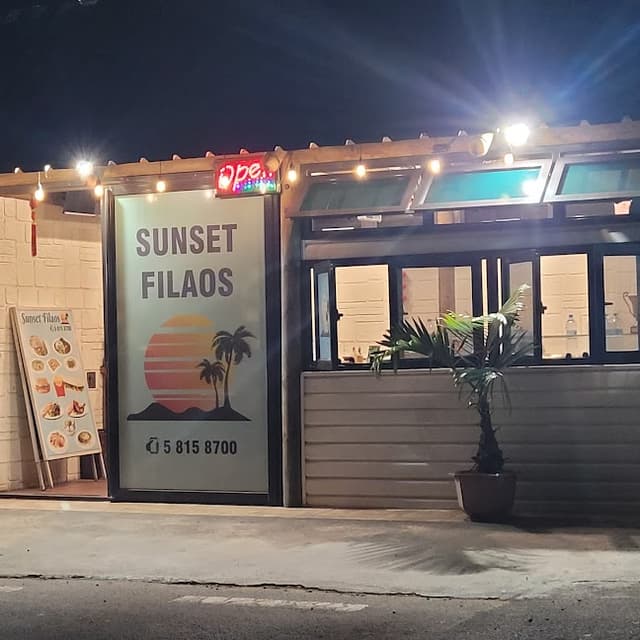
- Namo India in Quatre Bornes - A proper restaurant (even though you order at the counter), Namo India is an (you guessed it) Indian restaurant, located in Quatre Bornes. Other than parking spaces being limited (there is space for 3 cars tightly squished together), the place is reasonably priced and serves authentic Indian flavours. A nicely decorated gaff, the vegetarian Thali meal with butter naan was delicious! People come from out of town to visit this place so you know it is worthy of a visit yourself.
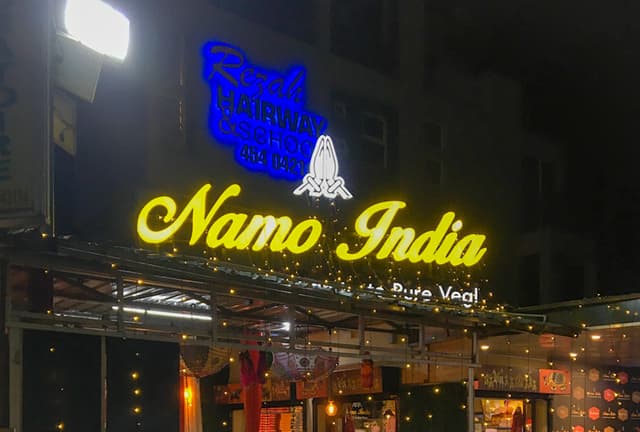
- Sangam Taj in Vacoas - Another more upscale Indian restaurant, Sangam Taj is a nice Indian restaurant serving up serious flavours. I came here on one of my last nights in Mauritius with my Chachi (Auntie on Paternal side), cousins Diya and Anuj and 2 young German travellers (Hans and Luis) I'd met at my WorkAway volunteering experience in Grand Gaube. It was reasonably priced and good service but isn't a must-go.

Indian Sweets
Ladoo is an Indian sweet (sweet meaning dessert). They are balls made of gram flour, ghee, sugar, crushed almonds, nuts and coconut. You can buy them for very cheap but don't go crazy, as like most Indian sweets, they're very fattening and sickly. All these Indian sweets are traditional, so expect them to be served during festivals such as Diwali.
Jalebi is another Indian sweet which looks like a bright orange sticky, cheeto- pretzel thing. It is a made from maida flour made into pretzel shapes and soaked in sugar syrup,
Burfi is a weird Indian sweet due to its texture and consistency. It is a dense milky tasting treat, made of milk powder, sugar syrup and almonds. The mixture is mixed and and cooked until a thick paste, then shaped into a semi thick square, topped with almonds or edible silver (called vark) and left to set. These can be quite powdery in the mouth at times.
Kaju Katli is another traditional Indian sweet similar to barfi but 10 times nicer and made using ghee, sugar, saffron and cashews (kaju means cashew). It is a thin strip which tastes of hardened cake icing, just less sweet. It is also decorated with vark on top (edible silver).
Rasgulla is an Indian sweet made from semolina dough, sugar syrup and chhena (cheese curds) made into balls.
Champagne biscuit is a Mauritian sweet, a very simple and tasty butter biscuit which can be bought for RS10 is most shops. They are dry and crumbly and tastes really good with some tea or coffee.
People, Attitude and Vibes
Mauritians are really nice and most are willing to help you out whether it be for a jump start or car troubles, directions or generally for a good conversation and history of the country.
There are so many stray dogs and weirdly not any stray cats. There are organisations laid out any of these animals which are severely injured including Indies World (contact details mentioned elsewhere in the guide).
Mauritians love it when you can speak some Creole and this goes far in terms of connecting with locals on a rawer level. You can read the language bible at the end to see key phrases and words to learn.
Mauritians have one of the best senses of humour I have experienced. They also always love a jolly up, so turning up somewhere with a bottle of alcohol or a few beers never goes unappreciated. Mauritians love drinking white rum, beer or whiskey. Get ready to have a night of laughs, jokes and stories, both happy and sad. You might even ben lucky enough to have the photo album pulled out on you. Mauritians also enjoy playing cards (although some Mauritians would argue you should only play these at funerals). MOST of the time my card games were welcome and seen as a fun way to spend time with everyone. I spent untold hours getting my ass whooped at rumy. Even though everyone really enjoys playing cards, you will notice that usually the women sit outand watch the men play. However, I played the odd few games with my Chachi's whilst my Chachas (uncles on paternal side) were at work. Seeing as they taught me how to play rumy, I thought it was only right to teach them to play a card game called 'Shithead' which they all really appreciated- (especially Veekrant who got waaay too into it at times).
Mauritians also love dancing. Put on some music, day or night, and watch the room all move together. Alcohol isn't needed to get a party started, just speaker or some instruments such as the ravann, the maravann, the triangle or the tabla. Let the dancing speak for itself. Dancing at social events and special occasions is expected, and even more specials as everyone is expected to get on the dance floor and move their hips to the music. It is one of the most freeing feeling in the world, dancing to Mauritian island Sega music with all your Mauritian family and friends. I also had many dance parties on the beach at night under the stars!
Elders and adults of Mauritius see weed as the 'devils lettuce' but are tolerant with alcohol and drunkeness (very similar amongst other countries). There are many who condemn weed, completely ignoring the pervy drunks who come out at night. I had this conversation with many locals and pointed out that it is usually men (sorry guys) who buy the cheap rum, get fucked up and sit on the wall, heckling and harassing peole who walk past. Not all drunk men do, but the ones in my familys' village did. Even though some of them were my Dads cousins, they still used to harass me, touch me and be all up in my personal space. The elder women know about this behaviour but feel like they can't stop it (due to the ancestral oppression of traditional Mauritian women), some even in abusive relationships because of this liquid poison. If drinking heavily, always keep your wits about you, in any country, not just Mauritius. Mauritians love a drink, especially on the weekends, so ladies make sure you're walking with someone or that you have transport arranged. You don't want to be seen lingering alone too much in the villages, otherwise people will clock on. I had people wait for me at bus stops or on roads, knowing I would be there there passing at some point in the day.
Sadly, most Mauritian adults only flick between 4 channels which are the news and then 3 channels of cheesy Hindi soap operas. They're funny at times because they're so dramatic (Bollywood be like), but one of the programmes called 'Mahabharat' is a soap about the Hindu Gods and Goddesses. I find that weird but they love it. Even though the costumes and actors/actresses are beautiful, it makes me wornder if the elders and adults an see what is beyond what they're consuming consciously.
Many Mauritian adults like to stay active and will go walking daily after work, running or do yoga. My Chacha Rashon and Chachi Rajini used to go walking everyday for an hour because it was their special time together. They were such a loving couple too so take notes y'all.
The public Hindu prayer temples are called 'kalimays'. These are government owned and paid for (occassionally they are resident owned). These are very beautiful and sometimes light up at night.
Prayer is a big part of the population as the majority are Hindu. Along with the many kalimays which are publically accessible (at least one of each main road), all Hindu households have an outdoor shrine. I won't go into too much detail as I could write a whole 'nother thing about HInduism, but the shrine is a decorated red and white box with a Hindu God figurine (called Murtis), with gold decor and red flags on each side. This shrine is prayed to, offerings are made and a ritual is performed during New and Full Moons. This is a great thing to experience so you could go to a temple (list of temples are mentioned in the 'Things to See' section') around these times and feel the masses of energy during these auspicious times. My cousin Kajal always said: 'Friends who pray together, stay together'. Ain't that some real shit.
Costs and Prices
This is a weird one. Mauritius is very cheap for certain things and for other things not so cheap. I'm talking European prices! Naturally, the fresh fruit and vegetables from local markets are very cheap. The food from street vendors is also ridicously cheap. Even products from kiosks are cheap, whether it's cigarettes, beer, sweets, drinks or bread. If you buy local, using meat and veg markets to your advantage, you can live on a fairly small budget (paying for accommodation excluded).
However, the supermarkets in Mauritius are pricey. You can still buy your cheap rice, flours and spices, but everything else is so expensive. Other shops such as Manjoo (a homeware shop selling random items) is also cheaper than what you would pay in the UK. Drinks and beverages are cheap in some local bars/eateries, but in a decent place (AKA touristy) you would expect to pay a hefty amount, especially in the North or in Flic en Flac. In general though, eating in a proper establishment is about 30% cheaper than eating or drinking in the UK and/or Europe. There are many cheap restaurants with street food vibes for really cheap though. Weed is also ridiculously expensive (£20/RS100 per g) especially if it's that good shit from Reunion Island!
Transport is hella cheap in Mauritius, as described in the 'Travel and Transport' section.
Haggling is generally not common in Mauritius unless you are at a market such as in Quatre Bornes or Flacq, or on the side of the street in places such as Port Louis or Flic en Flac, but you definitely cannot haggle with taxi's. But you never know if you don't ask, so go for it! I don't have to remind you about no regrets!
Accommodation
Right, so, accommodation in Mauritius is expensive. But fear not, as this is a budget backpacking guide which means I have tried and tested where you can stay for cheap, where you can camp (which is the cheapest accommodation to exist) and Couchsurfing. There is no cheap place to stay (under £10 per night), unless you make a deal with an Air B&B, a lodge or a local person. As I stated before, there are unfortunately no hostels which currently exist (niche in the market anybody)? Hotels are costs at least £50+ per night to maintain the 'luxury' illusion for holidaymakers and honeymooners.
However, there is a chain of cheap motels called L'Emauraude Bleu (Flic en Flac RS500/£10 per night), L'Emauraude Ruby, L'Emauraude Diamond, etc. They are placed in different locations (I only used the one in Flic en Flac) and are a lifesaver of accommodation as a back up in case plans go west and you need a last minute place to stay. Each hotel is in a different main town (Rozil, Flic en Flac, Port Louis). The reception is open 24 hours and they have details online on Google and a functioning website if needed. My cousins say these hotels exist just for people to have sex in but I liked the rooms and it was just what I needed at times - warm shelter, a decent bed and decent shower, plus they leave you to your own devices (sparking up a joint on the veranda anyone?) and provide a pool and towels so it's a pretty undisturbed night. Winning!

Culture and Opinions
Creole is easy to learn as it's such a basic language. It is broken French, so is similar in words and pronounciation, however, it carries much less grammar and rules which makes it simple to learn, as most phrases translate pretty directly e.g 'Where is the moon?' is said as 'Kot la lun?' which directly translates into 'Where the moon?'. Pretty simple right? It is easy to get your head around and means no excuse not to learn some! It really does go a long way when dealing with locals. See the 'Language Bible' section towards the end of this guide for common words and phrases for you to learn to impress the locals.
Sega music is the natural music and dance of Mauritius. It is inspired and influenced from many different genres such as reggae, hindi, bhojpuri and songs from enslavement, usually sang in their mother tongue Creole. Common instruments used in Sega music include the ravann, maravann, tabla and triangle. It's a joyous type of music which you can't help dancing to. Sega dancing is very fun (get someone to teach you), and sexy when done properly. Sega dancing is done by moving all of the body, except for the feet, keeping them on the ground during the dance.
There are Indian remixes of literally every song to ever exist and most are better than the original. Some POP off. I never realised how beautiful Hindi songs are until going to MRU. They really have beautiful lyrics, strong meanings and sing in unfathomable frequencies with such graceful dancing.
The modern fashion in Mauritius is very normal with most of the same clothes being found in MRU, same as the UK. The younger generation wear modern and stylish clothes and literally every one has an android mobile phone. The adults tend to still have brick phones, however some also do have androids. iPhones are seen as very 'high class' yet Mauritius doesn't seem very behind the times (not compared to other African countries) on anything 'pop culture' wise. The younger generation seem very tolerant towards others with different beliefs, however some (especially Hindus) are oppressed in their household by their religion. It is very much a forced culture and maybe people practice Hinduism 'because their parents do'.
In Hinduism, astrology and moon phases are very important to their culture, calendar and perception of time. In fact. the Hindu calendar runs from full moon to full moon, with each month being dedicated to a specific God/Goddess. Special prayer takes place on all new moons and full moons, with some being more auspicious than others. Families will always consult a priest (who is always an astrologer), to best plan weddings and baby conception and even what the babys' name will be. The name will be chosen by the priest, depending on the baby's birth chart (the position of planets at birth), with the name representing the qualities of the child based on this information. I think it's quite a beautiful way for a baby name process as a child will tend to grow up embodying the qualities which they believe they're name suggests. Everyone has an official name (used for documents, etc) and a home name/nickname which is used most of the time in their life and at home/school. E.g my Chacha is officially called Sunkarsingh but everyone knows him as Harish.
Flour and rice are subsidised by the government. Plain white flour goes for RS per kg, which makes it extremely cheap. This is why bread is cheap and fresh in the morning- everyone wakes up early to get their bread. I noticed when they eat bread, many tend to pick out the soft filling and throw it away. I asked loads of people why they do it and they just reply 'because my parents used to do it- I've done it my whole life'. I'm still not closer to the reason of why people originally started doing this... maybe you will be the one to find out?
Creole is is still evolving as a language, with new words being recognised all the time. Weirdly though, you have may instances where the word is the same for 2 things, with the worst one being 'driote' (prononced dwart)- the same damn word is used for STRAIGHT ON aswell as RIGHT. Which means when you ask someone where to go, and the answer is one of these words, you need a physcial hand signal to actually know what 'droite' they mean or someone needs to point where they mean while they're telling you. A new word for 'straight on' needs to be founded. So there is an example of how creole is evolving.
Depending on what grade they're in, children finish school at either 14:00, 14:30 or 15:00. Obviously roads are busier at these times. I was lucky enough to go with my Chacha on his contract bus and do the school run a few times. The kids were no older than 7, and we dropped each one to their house. It was nice seeing their parents greet them outside the house, and I noticed how many more dads are active within these kids school lives, compared to the UK.
There are many languages spoken in Mauritius including; Creole, French, Hindi, English, Bhojpuri, Tamil, Telugu, Urdu, Arabic and Mandarin, plus many more. Creole actually developed further from when it was being used as a pidgin language, during their days of slavery. This language was invented out on the fields, so the locals were able to speak freely and translate, without the French colonisers knowing what was being said.
Traditions and Heritage
Hindu families stay fed in MRU- probably because their food tastes so good, however, literally everymeal and snack is made using either lots of oil or lots of ghee. Ghee is butter which is churned until the layer of fat separates. This is strained and then used as a cooking fat. It makes for a healthier cooking fat compared to the others and is considered Ayurvedic, however, its still fatty and an animal product. A lot of Mauritian food has high levels of salt too. This isn’t surprising as so many Mauritians have hypertension and diabetes! There are several diabetes clinics in every town.
Mauritians LOVE TO DRINK and gamble. They drink mainly rum (made from the Mauritian sugar cane), whisky or beer which can be bought for cheap at most shops/kiosks and they gamble mainly on football, horse racing and billiards.
In Hinduism, veg food means no meat and no egg. During many auspicious holidays and festivals, it is common to fast. Karem (Hindi for fasting) means eating the veg regime (no meat, no egg) during the fasting period. There are auspicious holidays and festivals often, with many different rituals including water and fire, taking place.
Kurtis are a type of Indian wear. They are available for both male and female but differ slightly. A kurti is a long top worn with trousers/leggings. For women, it’s a longer dress, with slits on each side, with a flat collar, and matching leggings. These are so comfortable, modest and fashionable af. I absolutely love wearing them as they’re suitable for all types of weather and activity (except climbing lol). The male kurti consists of a shorter slitted top with straight trousers. All kurtis come in beautiful and colourful patterns and designs.
‘Namaste’ is used as a common greeting amongst Hindus. It means ‘I greet the God within you’.
One of my favourite things about Mauritius is eating with hands. It is very common practise in Mauritius and is a habit I have bought along with me. It brings you closer to your food, as you are more intimate with it. Plus, you never burn your mouth because your hands do the testing!
On birthdays, it’s traditional to feed your family the birthday cake, and vice versa. Slice a large piece of cake and put on a plate, then cut this cut into smaller chunks. One by one, you feed each guest and they feed you, kissing each other on each cheek and wishing ‘Bon Anniversaire!’ (Happy Birthday).
I was lucky enough to be in Mauritius during Diwali Festival- 4th November 2021. Diwali is the festival of light in celebration for the Goddess Lakshmi. The meaning behind Diwali follows as this: Lord Ram and his wife Sita were disturbed by the evil Ravana, who kidnapped Sita and wanted to marry her. This pissed Ram off, so he went looking for Sita and came across Hanuman on the way! Ram and Hanuman fought and defeated Ravana to save Sita. Upon returning to the village they left behind, all the villagers had lit thousands of lights and lamps to welcome them home, and to reassure Sita that she would never be alone in the dark again. This is why Diwali is the Festival of lights, and why it is celebrated as so! Diwali rituals include making Indian sweets and putting them into small, decorated folded cardboard boxes (to hand out to the community later). With Diwali being the festival of light, little lamp dishes called ‘Diyas’ are lit. They stay lit as the flame is on rope which is soaked in ghee. We also performed the OM prayer/mantra 108 times with the Mala beads (108 is an important number- look it up). The house is cleaned from top to toe in the daytime, and people dress in brand new Indian outfits. Goddess Lakshmi is said to be the Goddess of wealth and good fortune and is to visit at 18:00 that night of the Full Moon. In the evening (after 6:00pm) you’re free to roam and hand out your Indian sweet boxes to your friends and family. Fireworks are often lit too, even though I’m not a fan of them on any occasion. It is a beautiful festival and I advise anyone to spend a Diwali there!
The ‘7 Karis’ as discussed in the ‘food and eateries’ section are eaten on celebratory ceremonies such as at a ‘huldi’ (Saffron ceremony on day 1/3 of a wedding event). The ‘7 Karis’ are traditionally eaten on banana paper and eaten with the hands (yay!). Briani is also a special meal in MRU, eaten on celebrations when you have plenty to feed, such as on birthday occasions. Briani is traditionally cooked in with soy cubes and jackfruit and served with tomato satchini (homemade relish), tamarin chutney and cucumber salad. After serving the ‘7 Karis’, it’s usual to have a sagoo and apolum dessert. Sagoo naturally comes as small white pearls, but when boiled, it enlarges and becomes clear gloop. Cooked in with spice, clove and cardamom, and served with a fresh apolum (Mauritian version of a small poppadum), this dessert is absolutely banging, even as a cheeky snack. It looks weird but it will not disappoint.
Infrastructure, Roads and Buildings
The saddest thing about Mauritius was it’s litter situation. Whether its because I’m used to litter on concrete, and it just looks good together, compared to litter in Nature, I was VERY aware of how much litter polluted EVERYWHERE in Mauritius. This made it more important to bring some litter home with you when you go anywhere. Mauritius is hideously polluted, but I know it’s not just tourists. Locals have a disregard for their Nature and will happily throw litter anywhere. Don’t be like this, respect our land and correct someone if you see it happen. This goes for cigarette butts too- empty the cherry into the floor and keep the butt on you until you reach a decent bin. Sorry, not sorry- it’s just the way of the world now.
Another thing I realised (amongst my European ways), was how the streets are not at all wheelchair accessible. Is this why I hardly saw anyone in wheelchairs?, Or is there a small wheelchair population? Who knows? But all I know is that it would be literally impossible to be in public streets/ground witha wheelchair- so something to consider wheelchair users! I think the Mauritian government should invest in this type of infrastructure, to make it accessible for people on wheels.
Mauritius is a small island and everyone knows everyone there! You also may unexpectedly see people in public, as driving 30 minutes takes you from one side of the island to the other. Be aware of this. Even though it’s nice in a community sense, it’s also annoying at times- Mauritian elders talk!
The main banks in MRU are FNB, ABSA, Standard Chartered and Standard Bank. They charge about 2% of your withdrawal if you use a Visa. I suggest getting a Caxton card, as ATMs don’t charge when using this card (unless it’s a chargeable ATM). Plus you get good exchange rates when using a Caxton card. The app is easy to use and you just load up your card as and when from your main bank account (free of charge) or pre-load, whichever suits you. You may be charged RS50 as standard at some ATMs. Use your card carefully and be aware of people around you, standard as in any country.
There exists such things called ‘cyber-cities’ which is a ‘cyber-CBD’ at Ebene. There are other normal cities which exist in Mauritius along with malls and supermarkets such as at St Pierre, Port Louis and Grand Baie. But with these pro-corporate cities, it doesn’t mean everywhere is affluent in Mauritius. Many places in Mauritius are living on or below the poverty line, with limited access to safe water, limited education options and little or no disposable income. It’s sad to see such two worlds juxtaopposed in such a way, but unfortunately is how it is at the moment. Don’t let Mauritius’ title of ‘most developed African country’ fool you into thinking they are living progressively.
Army, Defences, War & Crime
For a country so small- Mauritius has 13 prisons! The main crimes committed are theft, burglary, murder and rape. Crime rates vary depending on what location you’re in. Just be vigilant at all times, especially at night time, as the most serious thing we are most likely to be involved in is pickpocketing. Don’t keep anything valuable in your pockets, and keep bags closed and secure, especially when walking through busy parts such as Port Louis or the beach. You can leave your belongings on the beach in the day, but keep an eye on the them when you’re in the sea. There’s no guarantee they won’t get stolen, but you don’t have to be paranoid. Just keep an eye on them every so often, however, when the beach is busy, it makes it hard for someone to thief and get away with it.
There is a heavy influence in Mauritius to make everyone a police officer, from the age of 18. You have to be a certain height (6ft) and have to pass a fitness course. Other than that, it’s pretty easy to become a police officer. The average police officer role isn’t a high paying one (unless you’re a specialist), but it carries a proudness and an authority for each person who thinks they’re protecting Mauritius during their police duty. Therefore, you will find many people wanting to be a police officer, are a police officer, used to be a police officer, or tried to be a police officer at some point. This means everyone proudly takes part in snitching as they feel like they’re gaining community respect. This isn’t the case and they’re just grasses, but be aware of this when smoking or not wearing a mask or whatever- as it’s the people you wouldn’t expect who have links to the police. Due to the corruption too, the snitch would get some money from the arresting police officer, as a thank you for their ‘vigilance’. Side note: I’ve met many stoner elders in Mauritius who grew up with people who are now police officers. They keep them sweet by offering a sack of rice every few months or maybe some money as a bribe. Stay woke.
When you work for government, their policy is that employees can’t have tattoos and if they see any tattoos in the job interview, you will fail. So many people hold out on getting a tattoo UNTIL they get the job in government, usually in their early 20’s. The 8 tiers of the police system in Mauritius are;
- Police technician - Police officer/patroller/detective - Corporal - Sergeant - Lieutenant - Captain - Deputy Chief - Chief of Police
Because there isn’t a massive entry expectation of the police, they are very corrupt but they aren’t that serious and are quite unprofessional. This means you could easily flirt or bribe your way out a situation, as they seem to forget their role as an officer pretty quickly, and focus on wooing you instead. It got me out of many ‘warnings’ about not wearing my muzzle. There is a US Army Base on the island of Diego Garcia (close to Mauritius), and has been since around 1973.
Agriculture and Farming
Obviously, with Mauritius being tropical and getting good amounts of sun and rain, you will find a vast supply of fruit and vegetables, many which are cooked in different ways and used in day to day lives. The tops crops which grow in MRU are; Sugar Cane (fields everywhere!), pumpkin, potatoes, aubergine, litchi, zucchini, tomato, chilli, okra, cabbage, jackfruit and tea.
Sugar cane is one of the main grows and exports in MRU. Sugar cane fields account for about 36% of the island (or 85% of the cultivated land)! Clothing is also a main export, as many fabrics and materials come cheap from India. These make up over 60% of total exports, but other exports include animal and vegetable oils and processed fish. The top 3 main imports of Mauritius are cars, petrol and pharmaceuticals. 21 sugar cane estates own 50% of the cultivated land in MRU.
Mauritians claim that psychedelic mushrooms become ‘magic’ only when struck by lightning itself. If you naturally want to find some, then you need to look where cows are grazing, as you will find mushrooms popping up within the poop. These are most frequent when it’s been raining and/or after thunderstorms. Once they’ve been struck by Zeus’ mighty lightning, they become psychedelic. The strength of psilocybin is potentially quite high, so don’t take loads at first as you don’t want to start bugging out. Remember ‘magic mushroom etiquette’ and have a good trip! You can make a whole day of foraging for the shrooms, cleaning and taking them then enjoying and tripping. Be aware not to pick poisonous mushrooms. Refer to a mushroom guide if you are unsure.
Mauritians have a rich tea culture too, you can see tea growing on farms and along roadsides, as short stout hedges. Mauritian tea is dark and quite bitter in flavour. You can have it on its own, mixed with sugar and milk, or steeped with some fruit or spices (to create a medicinal elixir). The biggest tea producer in Mauritius is Bois Chéri and is the first tea plantation in Mauritius (planted in 1892). This tea spot is also second in line of the ‘Mauritian Tea Route’. Tea factory tours are available to do as an activity where you spend the day learning about the history and importance of growing tea in Mauritius.
Immigration, Airport and Visas
Arriving at the airport, intending to stay for 6 months, I needed the following documents;
- Passport with at least 6 months valid (and at least 2 blank pages)
- Proof of a return flight to anywhere for 3 months time (used www.onwardticket.com - link below)
- A letter from a sponsor/local person/volunteer project, stating their name, occupation, address, contact details, ID card number, and confirmation they will be sponsoring your stay in MRU, along with a copy of their ID card
OR
- Proof of a hotel booking (even if not for the whole duration of stay)
- 3 months bank statement (though they only check for 1 month)
- Proof of travel insurance
Yellow fever certificate is NOT NEEDED unless you are travelling from a country with a high transmission risk. UK does not count as this so I didn't need any vaccinations to travel to Mauritius.
If you provide all documents, and your return flight is near 90 days away, Immigration should grant you 90 days initially. You can then extend this by another 90 days- 180 days is the total amount you can stay in Mauritius as a non-citizen, per year (can vary depending on origin country).
You must declare funds over RS500,000 (£10,000) at the airport (but I don’t think none of us have these funds on us as we are broke backpackers).
Extending your Visa (whilst in the country)
Extending your visa for another 90 days is very easy and FREE. Extending your visa costs nothing, except a trip to sunny Port Louis. When your visa has a few days left until expiration, you’ll need to visit the Passport and Immigration Office, 2nd Floor of Sterling House, Lislet Geoffroy Street, in Port Louis. If driving, park at Champs des Mars racecourse for free. If getting a bus, there will be plenty which stop in Port Louis. The Passport and Immigration Office isn’t a far walk from the bus rank. Once you make it to the 2nd floor of the building, wait in the waiting area until you are called forward. Ensure you have all your documents. The woman who processed my visa extension was really nice and friendly, just crack the icy exterior. I ensured I had all copies of all documents needed, so I didn’t mess her around. There are plenty of photocopier shops in Port Louis so don’t worry about not having a access to a printer.
The documents needed for a visa extension are;
- Visa Extension Form completed and signed (form available from this link) https://passport.govmu.org/passport/?mdocs-posts=application-for-extension-of-visa
- Photocopy of your ID page of passport
- Photocopy of your initial VISA page of passport
- Bring ACTUAL passport too (I was asked for it even though the list said I didn’t need it, and luckily I had it on me!)
- Copy of return flight for within 90 days time
- Recent 3 months bank statement (but I only needed to provide one months as it’s ‘too much paperwork’).
- Renewed letter of sponsorship stating same details as above
OR
- Proof of a hotel booking for some of this stated period
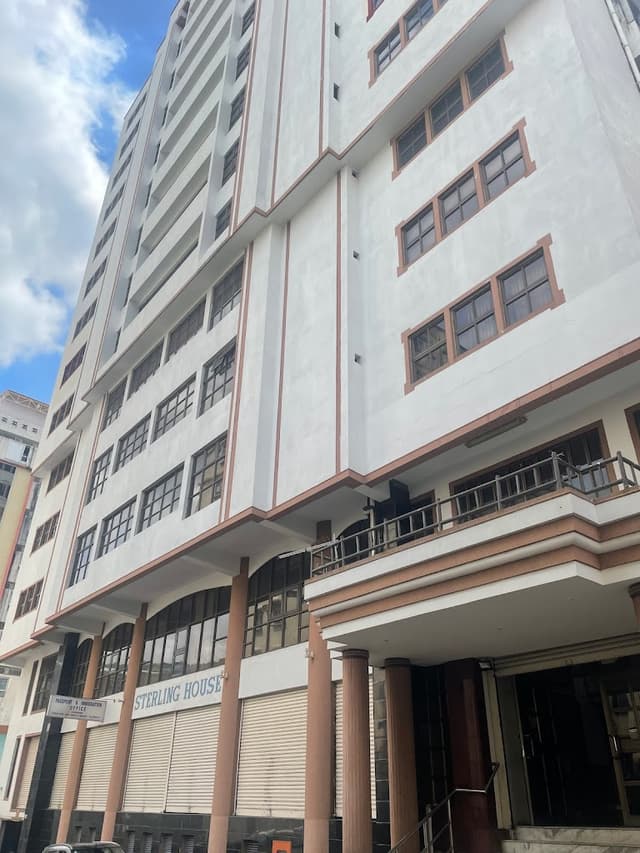
Cautions and Dislikes
Long papers are hard to get hold of so consider bringing some out with you if you smoke. This also applies to cigarette smokers- Mauritius doesn’t sell rolling tobacco or short papers or any smoking paraphernalia. Maybe just quit? I never realised how much I’d struggle without a grinder, especially because the Mauritian weed is wet.
For my vapers- there are a limited amount of vape shops but they are there in main towns (Port Louis, Flic en Flac, Grand Baie).
The government are corrupt. There’s inter generational power passed on within families in Government, including the Prime Minister himself. Minimum wage is RS607/(£12.14) per week. The obvious class injustice, which affects a huge amount of the population terribly.
Million dollar hotels are being built left, right and centre, ruining people’s land and the nature that surrounds them. Some villages don’t have water daily but have a corporate bank down the road from them. I noticed how the government are so obsessed with the rich over here and completely disregard everyone below this ‘richness’.
Weed is heavily criticised and people still very much see it as a drug, not aware of its medicinal properties. Which is weird because it’s well known that Lord Shiva smoked weed and there are many active smoking Lord Shiva devotees AND actively smoking Rastafarian’s in Mauritius.
The men are a bit pervy and it’s tiring having to constantly and politely ward them off. It’s worse in Port Louis because of the density of people but even in the villages, they act creepy sometimes. I was never in a dangerous situation though (other than the quarantine one).
Cool Things I Noticed
The Mauritian men are really into their cars. Some have had theirs for over 25 years because it was the first one they bought. My Chachi Suraj used to have to walk over 5 hours (each way) to work when he was younger before he got his car, and I’m sure he’s not the only one, so it makes sense why their cars are so precious to them. Many of the cars are modified, lowered, decorated with bumper stickers and wraps and kitted out with massive sub woofers. They BLAST music out their cars down the streets and it’s so normal, I love it. In England, everyone’s up tight and would look at you dodgy for having too much fun.
The locals really appreciate even the slightest attempt at speaking Creole to them. They may laugh but that’s because they’re endeared that foreigners are trying to speak their language- either way you’ll get many smiles for it.
Lots of Mauritians love smoking weed (and drinking), and all Mauritians love and appreciate nature. Which means it’s always appreciated by all when you go to the top of a mountain, or for a midnight sea swim, with a couple of rolled doobies, a few cans of Phoenix, and just chill out watching the birds or the stars. Me and my cousins Anuj, Diya and Sudhish, once drove to Belle Mare with a mattress half hanging out the boot, so we could lay it at the beach and stargaze. It was one of the funniest things I’ve seen.
There are more travellers than I expected to meet out in Mauritius. If you want to meet other travellers, then you need to know where to find them. I suggest connecting with people on the WorkAway and Couchsurfing apps, as opposed to meeting tourists at bars. People say you can’t travel Mauritius but these people don’t know jack shit about things. Mauritius is a great place to travel and not worth missing out on just because it’s small. It’s packed full of culture and experiences to learn from, and is full of good food and good nature. It’s ideal for a swimmer and water lovers, sun lovers and climbers. However, it’s not geared up towards travellers as there are no hostels, which means you need to either Couchsurf or camp on this journey if you want to travel on a budget, like I did, but it makes for such a more wholesome backpacking experience. You won’t be the only traveller in Mauritius, so come to decide for yourself if it’s a Small Island or a Big Volcano.
Lit Locations
In The North
Grand Gaube
Grand Gaube is not a well known part of Mauritius for the average tourist. But for the nifty traveller it’s a great place to be to get the local experience and to look beyond the ‘paradise façade’ and see the REAL side of Mauritius. Grand Gaube is one of the rougher parts of Mauritius due to the poverty that exists there. The village doesn’t even have access to water throughout the day! The government cut it off for 8 hours in the middle of the day. Yet there’s a massive corporate hotel being built 5km down the road. WHERE’S THE HUMANITY?
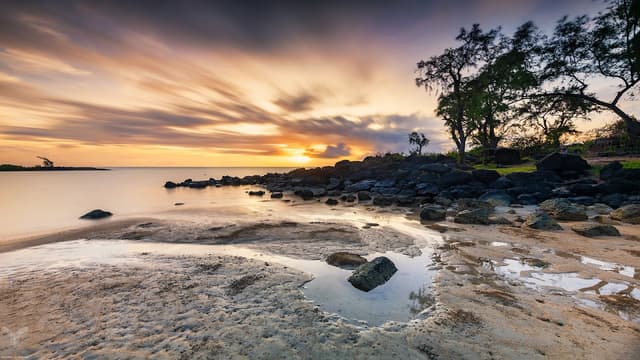
Unfortunately, big villages and communities like these are in these shit positions because, like all melanated people, they have been, and continue to be, oppressed by manipulative actions of their country’s government. Fortunately, there are any members of the GG community who actively speak out, protest and fight the good fight, against these groups and companies, specifically Danyal. I did some volunteer work for Danyal for 3 weeks in Grand Gaube. A spiritual yogi, he provided me a spiritual retreat, I got to practise ‘karmic yoga’ (Danyal said it’s a form of yoga where you work to serve a collective vision/goal which is external to yourself), and I met my first traveller friends (other volunteers) through him. Through this, I got to experience Grand Gaube properly.
Conveniently, Grand Gaube is also THE spot to buy weed. It’s very available and it’s the best you’ll get in MRU (but it still won’t be great). Not only am I am smoker, but I also find it important to support local businesses, so I’m all for it. Plusit gives you an excuse to get in with the locals! Just be sure to be with a local you trust at night time, as it can be a shady place. But as I grew my confidence, I sussed our what the vibe was. I walked through the village late at night, alone, many times with no quarms. Most of the time it was just guys flattering themselves asking for my number or people greeting me. It’s not dangerous like London, but just be aware that it’s a poorer area. Everyone’s pretty chill there anyways as most are also smokers. Grand Gaube overall has my heart. The beach is beautiful, you can walk along the rocks of the coastline for ages, you can swim in the sea and you can play with the weird sea cucumbers. Thepeople are kind and friendly and love someone who is from out of town. There’s also a lot of younger people there so there’s many friend opportunities and there are many rasta man who occupy these vibey coast villages (which means you’ll hear reggae blasting all day! Jah Rastafari!)
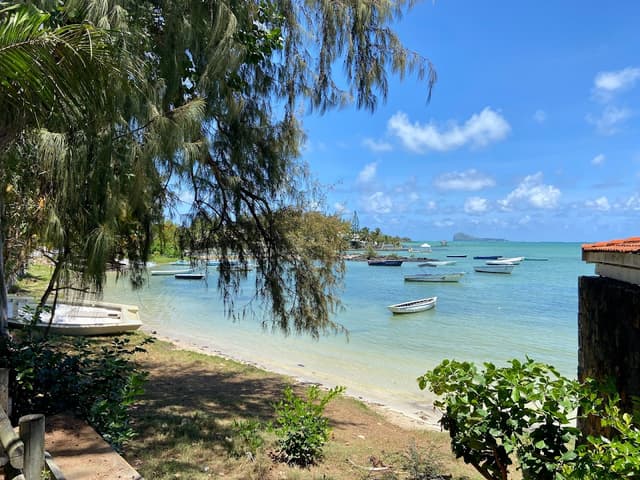
There is a heavy Afro-Mauritian and rasta population in The North, due to it being close to the sea. Most of the north population who live on the coast, have done for generations, and are traditionally fishermen. This is also why you’ll notice the North coast has different vibes to other coast towns such as Flic en Flac or Montagne Blanche. The North and South coast towns such a Grand Gaube (North) or Baie du Cap (South), they have this sleepy fisherman vibe. Everyone seemed so much more chilled out about life, compared to everywhere else. This includes them being chilled about masks and plandemic stuff too. It seems like everyone smokes a dooby once in a while in these areas, because the people are so friendly and talkative and seem to smile more than anywhere else. Unless it’s just because I can actually SEE their smile.
Mon Choisy is great for swimming at the beach. It’s a beautiful beach with blue waters. This was the first beach I went to in MRU. Pereybere is also another beautiful beach in the north (just next to Mon Choisy), a beach you can swim at and spend the day too. Actually, me and a Couchsurfing friendset the tent up on the beach at night time and went for a midnight swim. It’s really peaceful at night and no one is around usually.
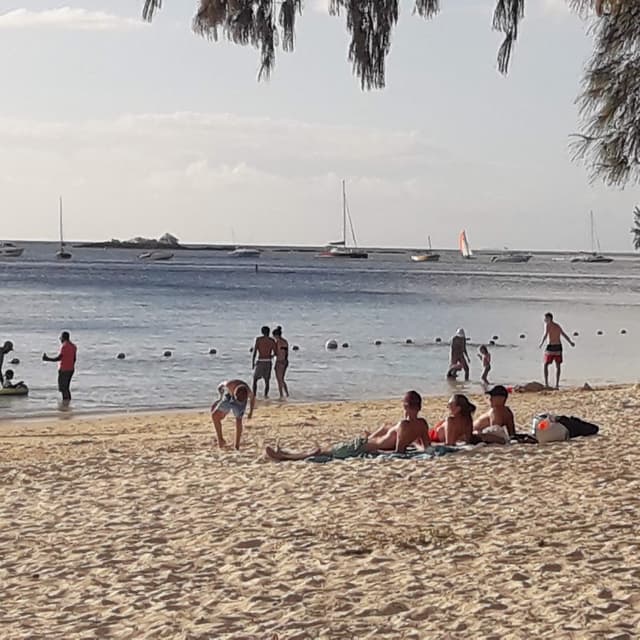
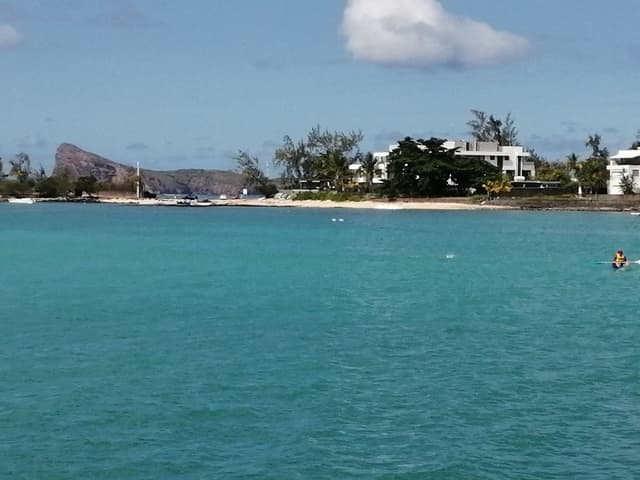
Pointe aux Cannoniers is also a beautiful walk for nice views, near Mon Choisy. In the North, in Grand Baie, there is La Croisette Mall. I don’t rate malls and this is the only time I will recommend one, but my Italian friend Sam, owns a coffee and gelato shop in the outside food court. The place is called ‘Mammamia Che Gelato’, and is Sams own family run small business. Her children help her out in the shop when they’re not in school. Sam makes the nicest desserts (the cheesecake and millionaire shortbread layered thing in a jar we’re so nice). The place is a good vibe and a good place to eat some proper Italian gelato.

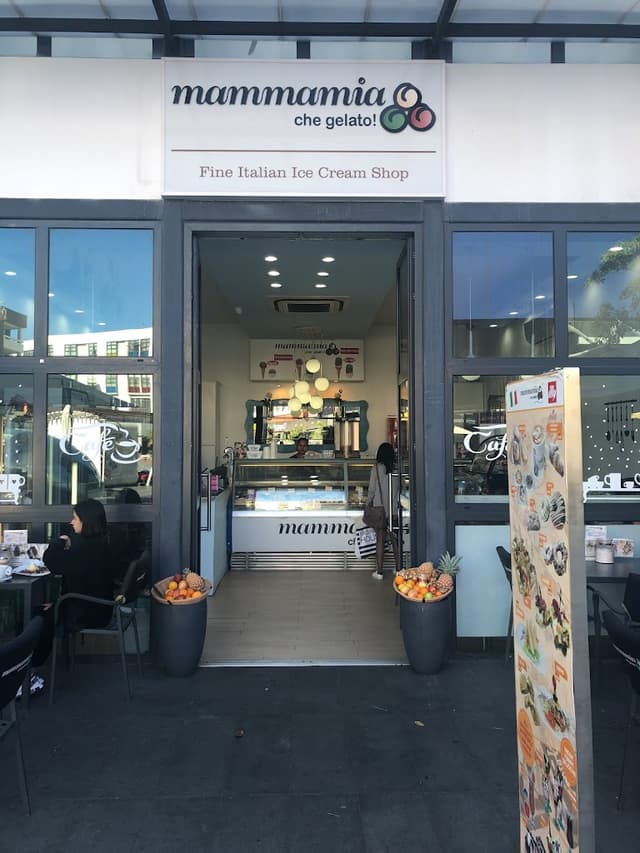
Petit Rafray/Goodlands
Petit Rafray is a village in the district of Goodlands, where my good friend Luveen lives. Luveen, Keshev and Rohan took me and Diya to a private beach (not fenced or anything) to play some guitar, look at the stars, hit bong and sing Oasis songs together. Petit Rafray is a quiet village with not much going on but it is in Goodlands which means it’s only a short drive away from take away pizza (when the munchies were kicking in), and it has supermarkets which is great because the small villages don’t have extensive supermarkets. Petit Rafray does hold the ‘Daruty Forest Trail’ though, which is a nice 2 hour trail walk in a beautiful forest. The centre of Goodlands also has a market which is really fun and buzzing. It’s definitely worth visiting Goodlands during midday to catch the buzz.
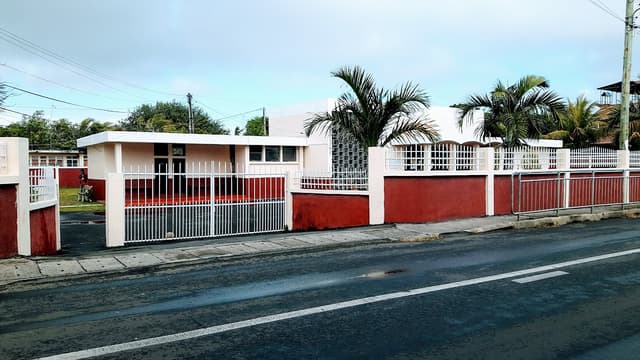

In The West
Flic en Flac
Flic en Flac is a touristy place but is the sunset champion. Which means I don’t recommend you staying there for more than 4 days, but if you want to party or have a cool messy weekend, Flic en Flac is the place to go. If not, then Flic en Flac is the place to go for astounding sunsets and peng golden hours. After the sunset you could go out drinking, starting off in Saphire Bar, with some strong ass cocktails and a couple games of pool. The music is always vibey and there’s always people dancing, no matter what the time. The staff are really cool and the Saphire Bar is actually a really cool place to go during the daytime too, when it’s less busy. The staff will play some pool with you if they’re not busy. Flic en Flac also has the only night club I went to, called Saxo. It’s actually a well cool place and I wish I found it sooner as they played an old skool r&b mix throughout the whole night so I was in my happy place. There’s also pool, football and rugby on TV’s and it’s nice and airy. If you like a cool bar to chill then this is the place, however, Flic en Flac in general isn’t made for your average backpacker. You also have the choice of many fishing excursions where you can fish for barracuda and tuna. It’s fairly expensive at around RS1200 per head but is a good morning from 6am-1pm, so you have time to bring home the fish and prepare it for dinner! Of course, this isn’t the only way you can go fishing in Mauritius- local fisherman will happily take you on excursions for a small fee of RS50 or so.

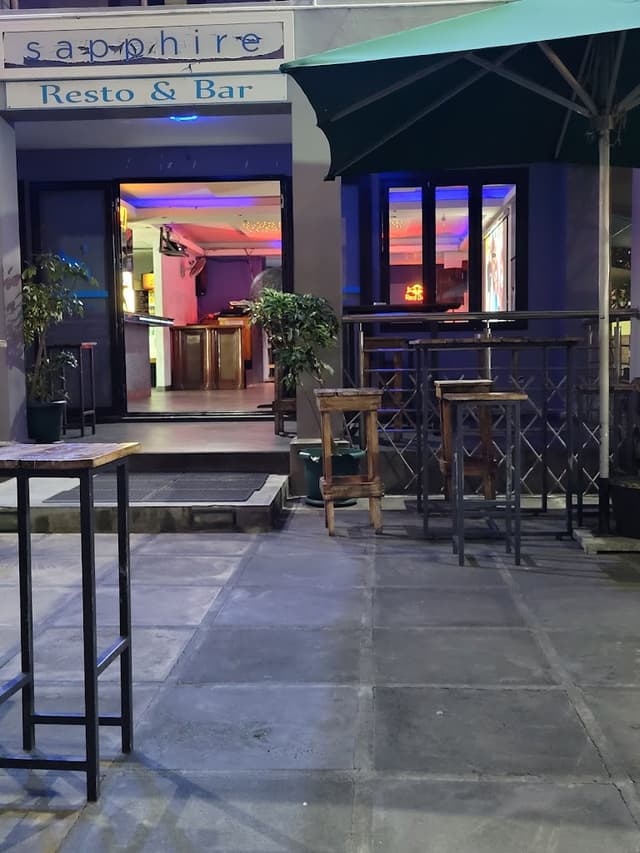
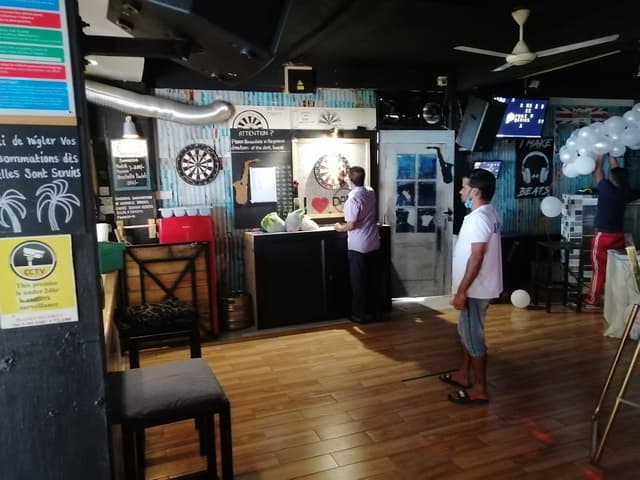
Les Salines
Les Salines is a town in the West Coast (just before Flic en Flac). Les Salines translates into ‘The Salts Flats, and got that name due to, you guessed it, the salt flats! They’re nice to visit for a picture, but unfortunately they are building construction opposite them so they won’t feel the same again. These aren’t wildly vast compared to the Makgadikgadi Pan salt flats in Botswana or something, but it’s a nice touch to the ‘goat village’. Plus they’re special as these salt flats have existed in the same place for many generations as salty water is left to dry up on the flats. Then, when dry, people manually rake the salt chunks up,and sell them locally. The salt is really nice and holds serious alkalising energies.

Grand Bassin
The Ganga Talao is the largest temple in Mauritius. It was founded in 1887 and is an absolute gorgeously peaceful and is worthy of a visit, whether you’re a temple-goer or not. For the templegoers though, you can continue walking up the stairs at Ganga Talao to reach the Hanuman Temple which is totally worth it. When you reach the top and stand at the shrine, you can see for miles andmiles over the temple. It really is views for days and a great place for a picture. There is also a protected flower bush there called Bois Dentelle, which is an endangered species of flower . It only grows in 2 places in the world- both in Mauritius. This whole place is a fantastic and beautiful place to be at any point of the day and is easily accessible in Grand Bassin.
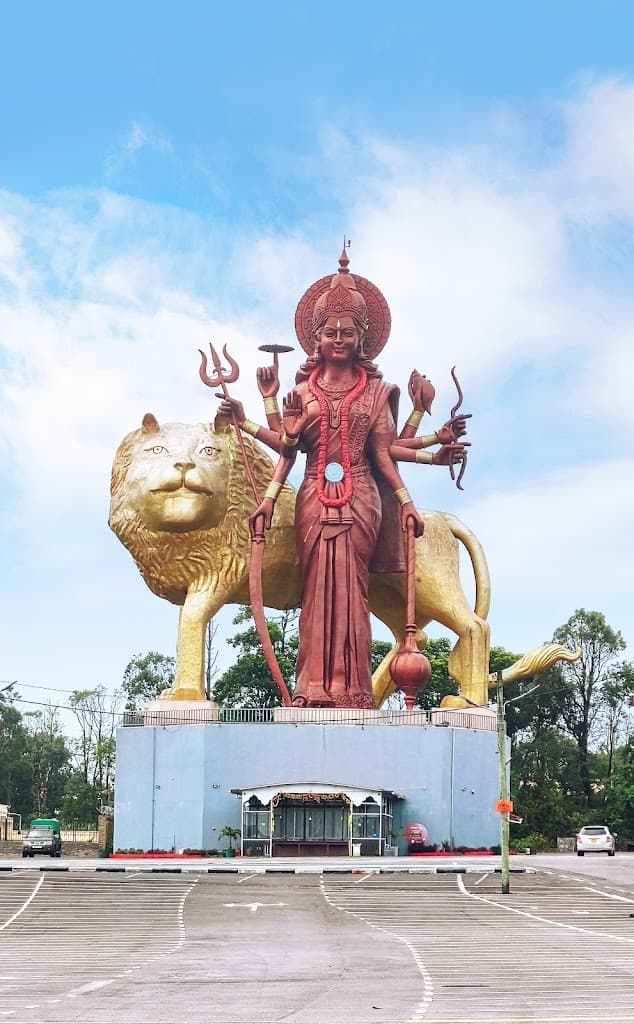
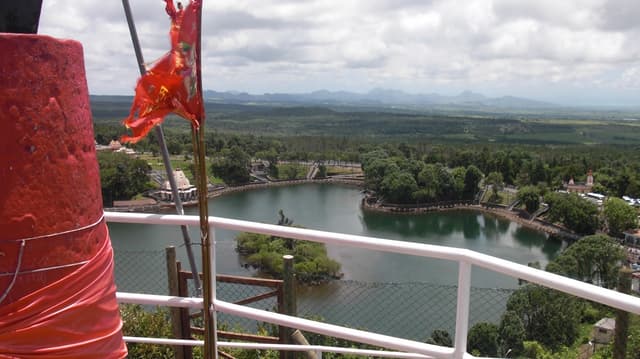
Albion
Albion Lighthouse is also a terrific place to go in the daytime. Not only do you get to see the lighthouse, but you also can climb down the rocks and swim in the rock pools. You can’t swim in this sea because the current is too strong and dangerous.
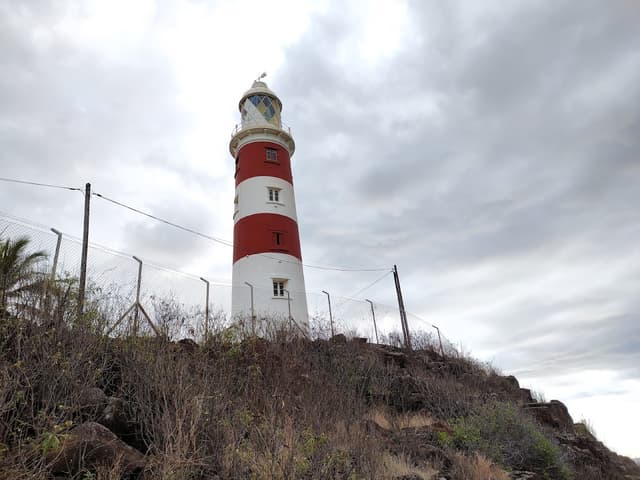
In Central
Ripailles
Ripailles in a small village, in between St Pierre (which has Kendra Mall and a main bus station) and Nouvelle Decouverte, on the central plateau. It’s at the feet of the mountains Deux Mamelles, and close to Pieter Both, which means it’s a great location for hikers. Being on the central plateau, and hence being so close to so many mountains, Ripailles and the surrounding areas get a lot of rainy, usually on a daily basis in winter and a few months of summer (climate change), which is nice because it’s green and luscious, but sucks because it can make mountains dangerous and slippery to climb at times. There’s literally nothing to do in Ripailles unless you have friends or spend all of your time in Nature so it doesn’t matter too much if it rains.


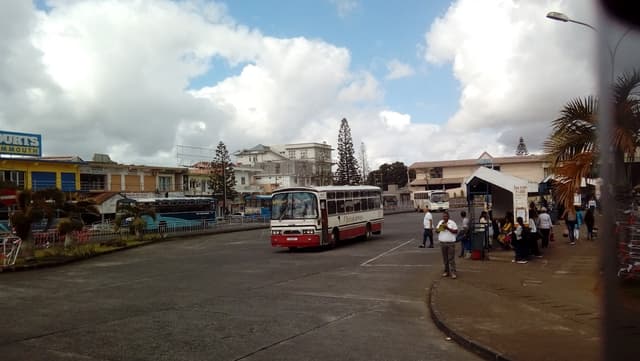
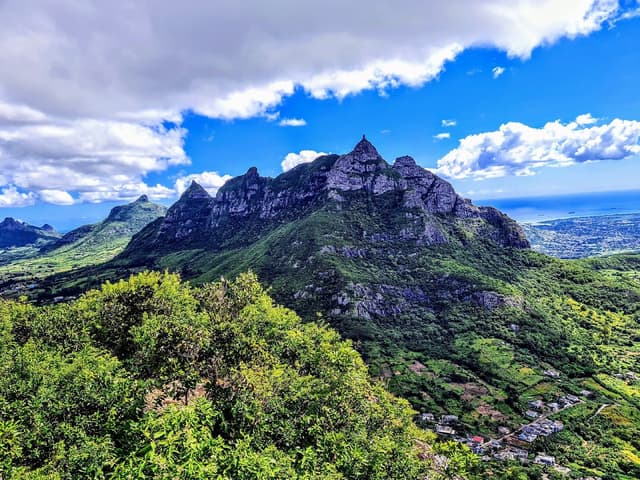
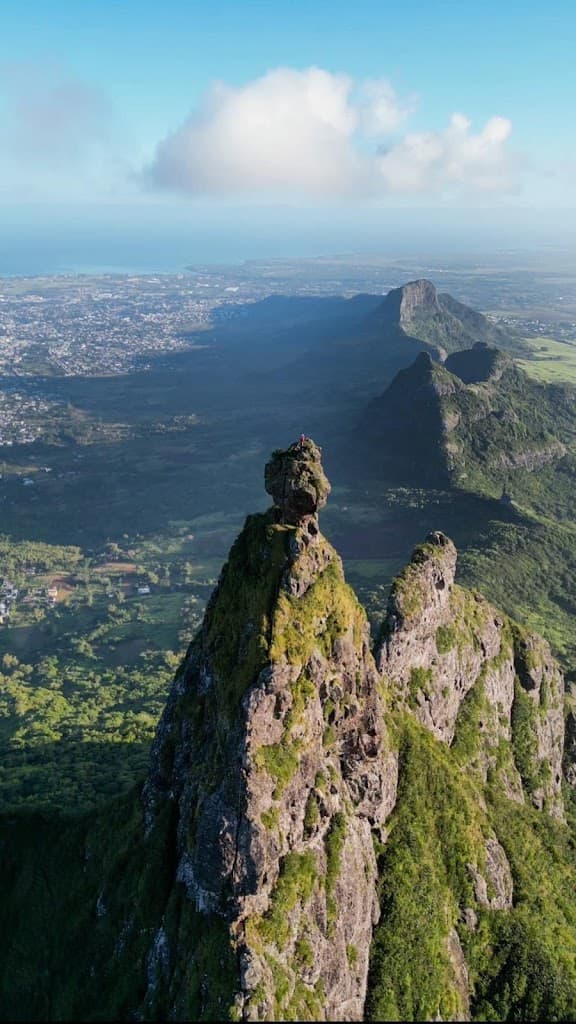
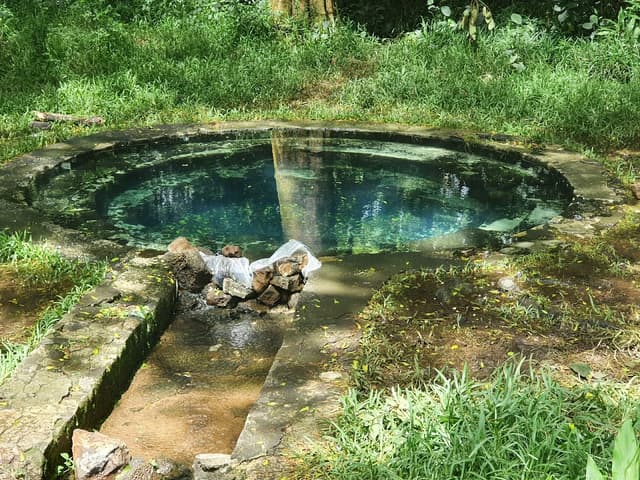
Port Louis
Port Louis is the capital of Mauritius. I would describe it as ‘little India’. It’s hustly and bustly and hot. I enjoy going to Port Louis because of the busyness of it and the eclectic vibe there, however, many avoid going there unless it’s necessary. Many Mauritians complain about the temperatures in Port Louis as it does get ridiculously hot. Port Louis has something for everyone, whether it be clothes, cafès, restaurants, markets, street food, landmarks and touristy bits or for the harbour/ Cudan waterfront.
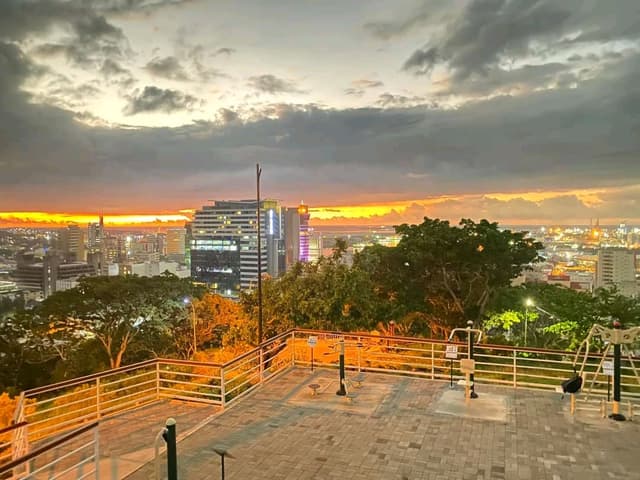
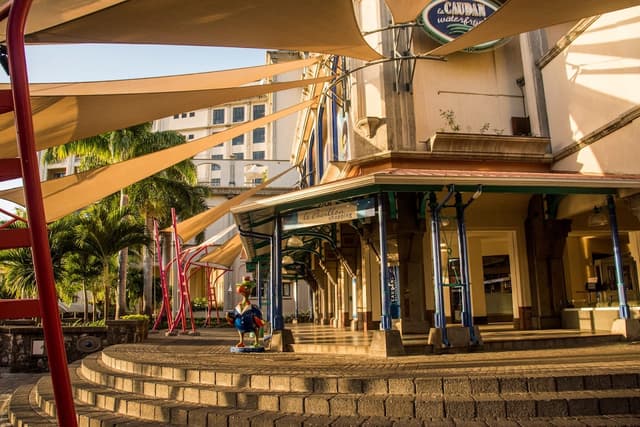
I had to go into Port Louis to accompany my cousin to the police barracks, as he was applying for a learners driving permit. He had to go into the building alone so I waited outside in the heat, while getting hit on by 2 policemen (not concurrently). The process seemed very long and demeaning for everyone queuing up there, whether it was for learners permits or not. The Visa and Immigration Office is also in Port Louis on Lislet Geoffroy Street. For more information about the process and location of the Visa and Immigration Office, see the relevant section above. If you are driving to Port Louis, you can always park for free at the Champs des Mars Car Park. It is open always during the day, however I’m not sure when it closes and what happens on race days. Port Louis is a nice place to spend a couple of days and see what’s cracking. They have one bookshop and really nice market shops. People will stare and greet you a lot in Port Louis. The market is a great place to buy some fresh spices or vegetables, or to watch a man machete a coconut so you can drink it guts for only RS125.

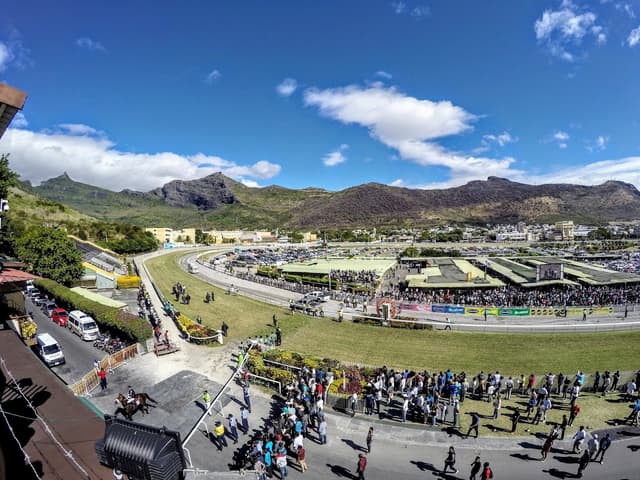
In Moka (near Port Louis) is Reduit, which holds the well known Cascade Minissy. Park at the 'University of Mauritius' and walk across the roundabout, through the sugar cane field, following the track. The landscape changes to more flora, then follow the waterfall with your ears. Minissy waterfall is a safe waterfall to jump into and swim! Climb around the left side of the cliff to get to the top. Just make sure you jump OUTWARDS off the cliff to avoid hitting yourself. Cascade Minissy is really beautiful, you can spend all day there. It’s also got good trees for you to put a hammock up- if you do plan spending a while there. Just please don’t litter the place! Bring your rubbish back with you and pick up some extra rubbish while you’re there because we want to leave places better than we found them.
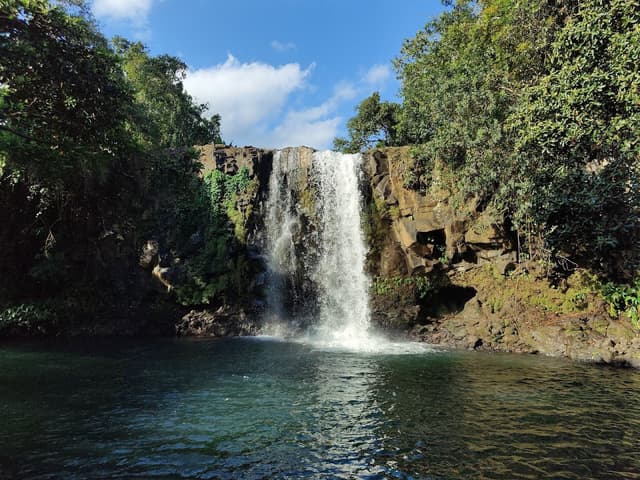
Sable Noir has a heavy rasta community so there are often some music events taking place there. I’ve never seen them posted online but if you’re in the area, check out posters on walls, surfaces, etc.*check out this website for detailed information on how to access most waterfalls in Mauritius in the link below:
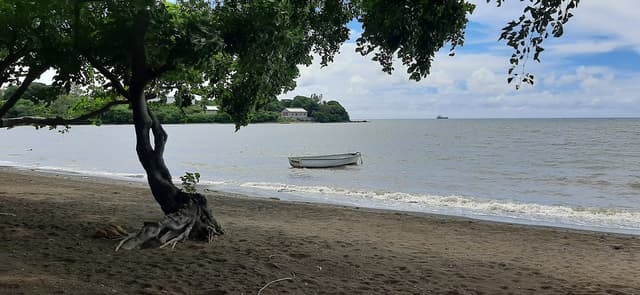
The South
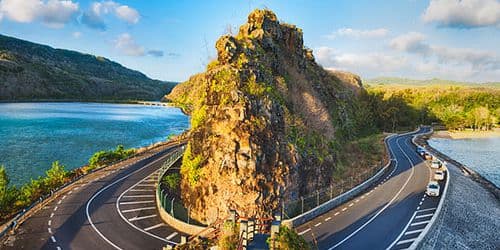
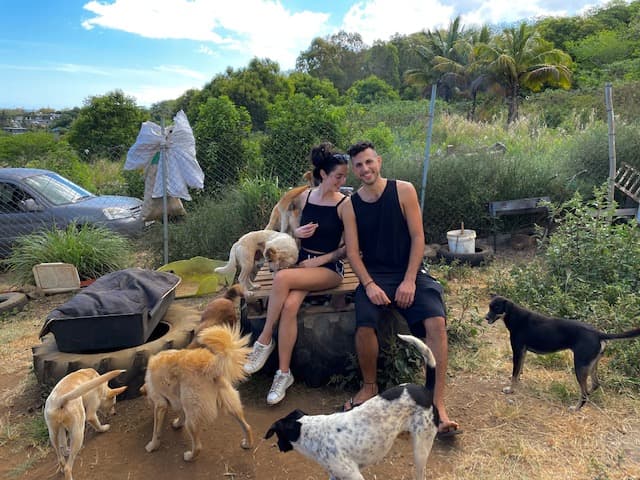

The South has such a good vibe, the people are unbelievably friendly and most have lived there all their lives, so can tell you so much about the history of the place. Even the infrastructure in the South is noticeably different, but life is just so much better there! You can laze on the beach and not be disturbed (other than by some young teenage girls coming over to sneak a cigarette away from everyone’s view lol) or walk up to anyone and make friends. You could go on a boat trip and do some fishing, or even just ask to get taken to one of the nearby isles 'Ile aux Aigrettes' or 'Ile Aux Fouqeuts'. Or you could try Kitesurfing? My friend Miguel gives lessons in Kitesurfing for cheap. You can contact him on WhatsApp if interested in trying it (or doing it again!) +230 5 482-5531.
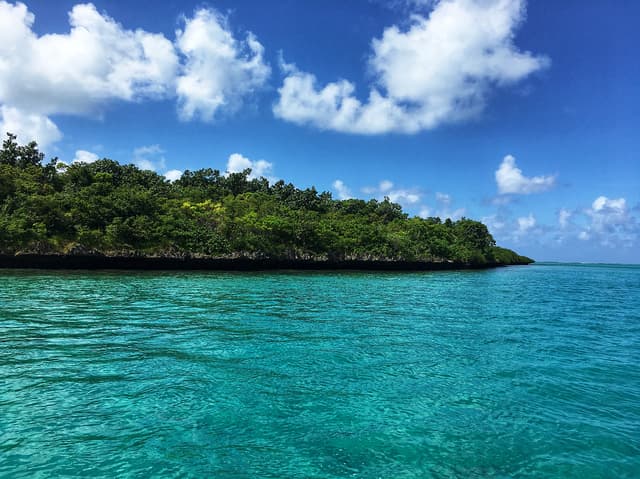

There isn’t much to do in these villages, but with the feeling that time stands still here, you don’t need to make plans, let the plans make you. There’s young locals everywhere in these places, I made friends with a waiter from Mo Filaos (my fried noodle plug) and we had a sunset party one night (with 2 other Indies World volunteers). The South is worth a relax and ponder there- it reminds me of an old poets writing town. It is a completely authentic place and is the TRUE side of Mauritius.

*The ‘Indie’s World’ volunteer project can be found on WorkAway or you can contact Cindy on +230 5 477-2334. or click on the link beloq*
Macondé is a 10 minute drive (or 50 minute walk) from Baie du Cap. Apparently it’s ‘Macondé’ because of Makonde tribe from Mozambique fled to here during the slavery period. It’s a beautiful viewing and picture spot- climb the steps to see the blues, whites, greens and blacks of the landscape all come to together in one beautiful view. It is truly breathtaking.
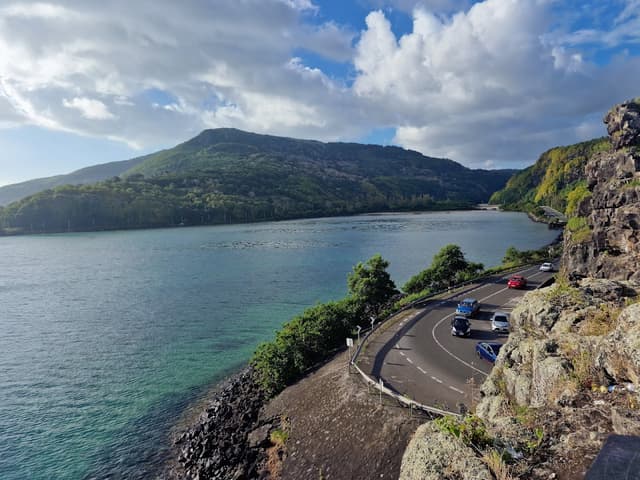
Riambel is a village to the East of Baie du Cap but only a 10 minute drive. Riambel beach is really beautiful- a great place to find cool shells and stones, and a nice place to relax and smoke. You can swim but it only comes up to your waist. The few hours before sunset is really beautiful here.
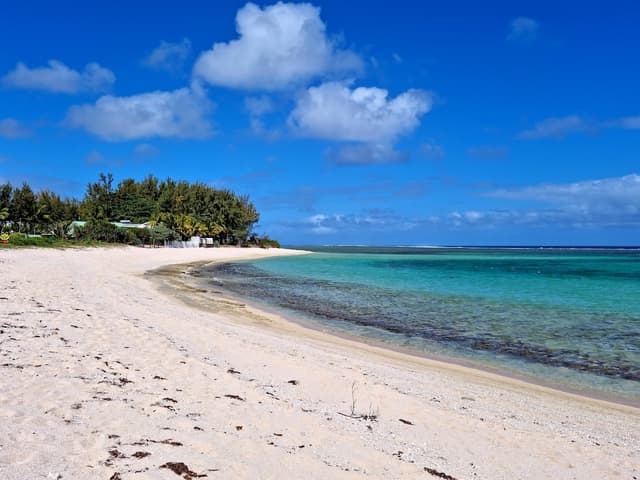
While you’re in Riambel, you might aswell visit the Riambel Vortex (no £ needed). The Riambel Vortex is a place of great energy. Underneath the ground of this area, there are 2 directions of energetic currents, which their forces oppose each other, creating a strong and healing swirling vortex of energy. Many people come here when they want to be healed. So on the ground, a labyrinth has been created with stones, so you can conjure up the energies. You can visit the light well as an opening ritual, for phase 2, you walk around each ring 7 times (7 rings for 7 different affirmations), until you reach the middle, then phase 3 is reading an affirmation with your palms facing the sky then laying on different coloured beds to meditate or relax. It’s a very peaceful place no doubt, so when I went with other volunteers from the Grand Gaube community, there was definitely an energy shift and clearance but I didn’t necessarily feel the energies from the ‘vortex’ itself- and I’m attuned to my surroundings. It’s worth a visit to see if you can feel the energies and if not, it’s a relaxing and meditative place to be. It is one of the 14 vortices to exist in the world- special stuff!
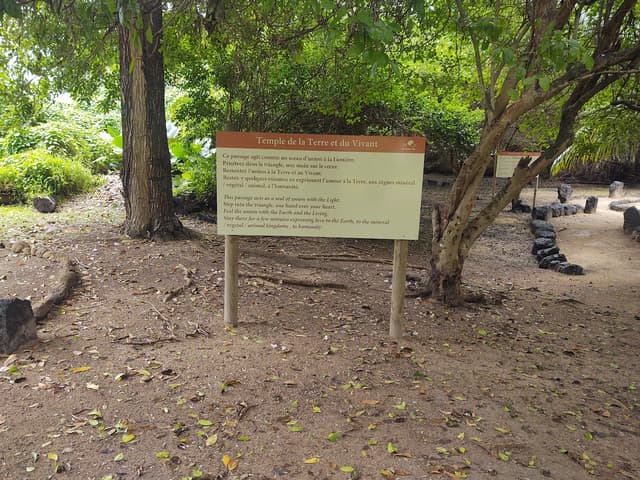
Gris Gris and Le Souffleur are also highlights of the South, but Rochester Falls is one of my FAVOURITE places on the whole island. Even though you can’t jump off the waterfall, you can swim underneath it and climb on the rocks. This place is beautifully surrounded and moulded by volcanic rock, which is in the shape of vertical lines, almost creating an illusion against the tumbling water. I put my hammock up here and spent all day with my friend Waren, swimming, smoking, swinging and listening to music.
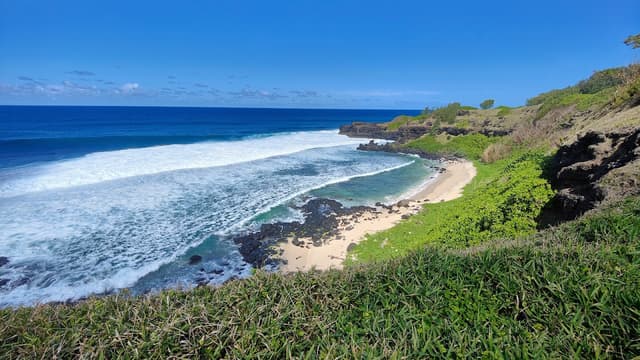

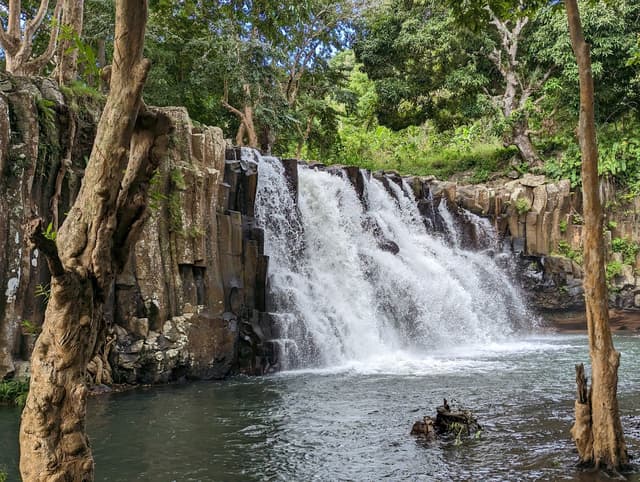
The East
Trou d’eau Douce is a beautiful little village in the East of Mauritius with a fantastic beach (that you can swim at!)
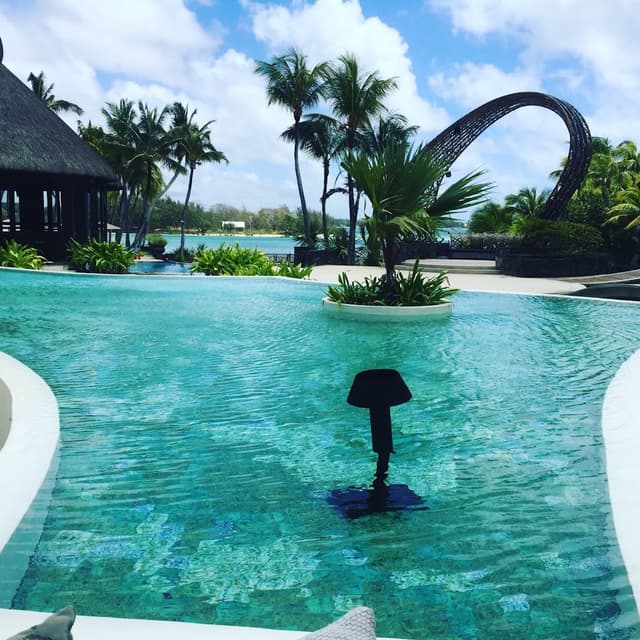
Poste Lafayette is a beautiful place to see, as the waves crash against the rocks at sunset, you walk along the rocks for miles.

Poste de Flacq is also a gorgeous place to be. With a cool ass beach and mangrove trees in the shores, you can swim/walk out for about 1km before you have to start swimming to reach a little island. It’s worth the trip, as this little island has a massive mangrove tree that you can climb and swing from. It’s a beautiful place to meditate, but check out the tides and see if you can camp on it for the night! I never got round to it sadly.

Islands, Ilets and Ilots
North
- Ile Plate (Flat Island)
- Ile aux Benitiers
- Ilot Gabriel (next to Ile Plate)
- Ilot Bernache
- Round Island
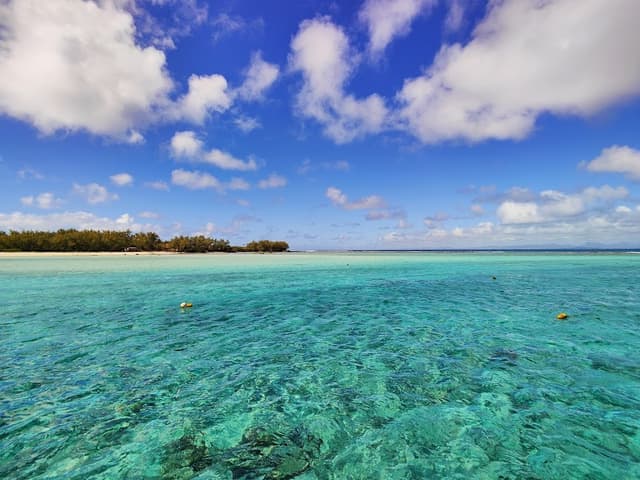
South
- Ile aux Fouquets
- Ilot Forneau (near Le Morne)

East
- Ile aux Cerfs
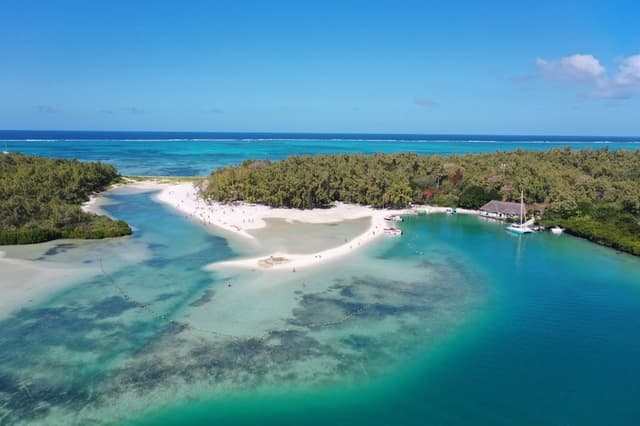
- Ile aux Aigrettes
- Ile Des Deux Coco (Blue Bay) - East
- Ile D’Ambre
- Ile de la Passe (Grand Port)
Budget Activities Sorted Into Regions
Budget Activities in Port Louis Region
- Snail Rock Montagne
- Le Daugeut Nature Trail
- Port Louis Central Market

- Caudan Waterfront Harbour

- Cathedral of Saint Louis

- Jummah Masjid
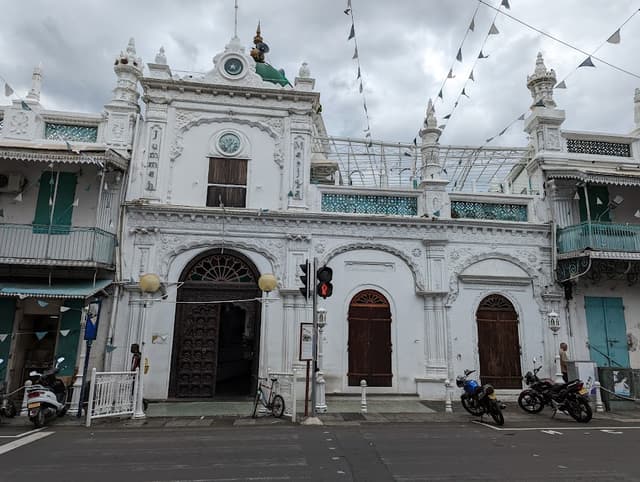
- Sockalingum Meenatchee Ammen Kovil (Hindu temple)
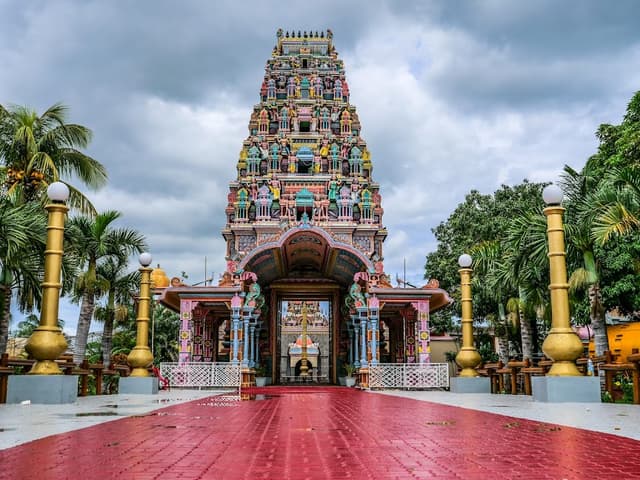
- Car rally races you can attend. Usually in Port Louis but check online to see what’s organised
- Kwan Tee Pagoda (oldest Pagoda in Indian Ocean - a Chinese place of Worship)

- Appravasi Ghat
The Appravasi Ghat is a UNESCO World Heritage Site. It is the place where the first slaves, or ‘indentured labourers’ arrived on the island to work. (This ‘experiment’ was different, and was an attempt to create ‘free labour’ after the abolishment of slavery in 1834, by the British Empire). The trick was to bring foreigners over to Mauritius to start a new life. Because they were lured with the ideas of money and payment, as if it was an official job, many people allowed themselves to be bought over to Mauritius. It wasn’t until everyone began working, and realised they weren’t getting paid for their work as promised. Even though some did receive payment for their work, most were cheated out of payment altogether- and the ‘indentured labourer’ working conditions were no different to slave labour conditions. This is why I use the term ‘labourer’ so loosely because let’s face it- they were slaves- no need to roll it in glitter. Each slave/labourer, were held at the Appravasi Ghat for a few days, while they undertook health checks and document checks. The holding conditions were very poor, small, cold and crowded.
The Aapravasi Ghat became a UNESCO World Heritage Site in 2003, because of the important symbolic meaning behind this building, for many of the slaves descendants who are now local Mauritians. Within the Aapravasi Ghat, there are many really cool historic records and artefacts which are relevant to the history of the Aapravasi Ghat, as well as the military, historic leaders, historic doctors and the culture of the people at the time. I found the Aapravasi Ghat a sad place with a blanket of deep reflection the second I got there.
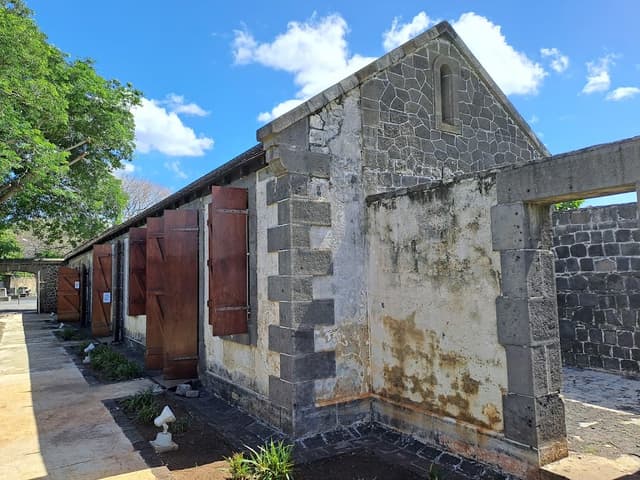
Budget Activities in Moka Region
- Cascade Minissy (Reduit)
- Montagne Ory
- Le Pouce

- Pietr Both
- Montagne Malenga
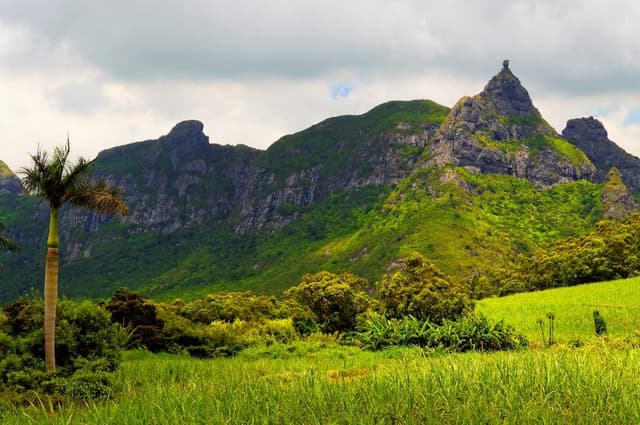
- La Laura
- Piton du Milieu
- Piton Jacob
- Valleé des Prêtres
- Pont Naturel
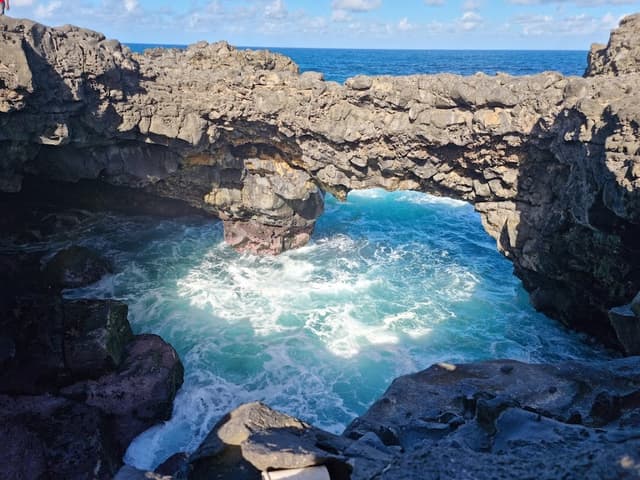
- Meditation Centre (it is what it says. Look at signs near Quartier Militaire Roundabout in Valetta)
- Quartier Militaire (walk around town to catch a vibe)
Budget Activities in Flacq Region
- Cascade Jakaria (Sebastopol/Domaine de L’Etoile)
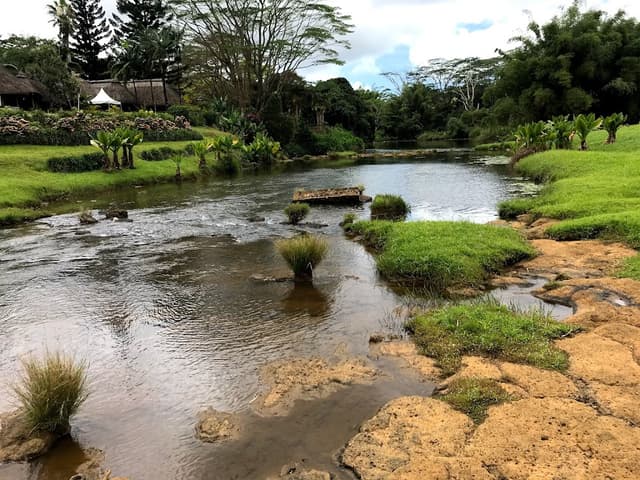
- Le Sur Montagne Maurice
- Montagne Blanche (in Montagne Blanche itself)
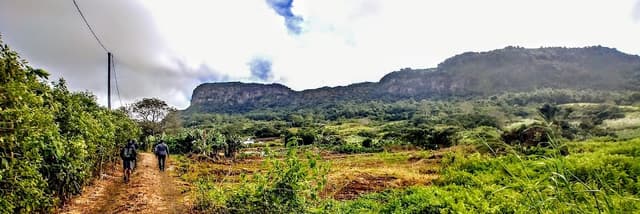
-Montagne Fayence
- Montagne Chat
- Le Chat et la souris Montagne
- Bras D’Eau National Park (entry and camping is free and authorised here!)
- Ile aux Cerfs (boat trip to an off shore island- find a local to take you and offer them RS50 or as a thank you! Plus you make a friend)

- La Source (Bon-Accuei)
- Flacq Market (Clothes, Food & Misc items)
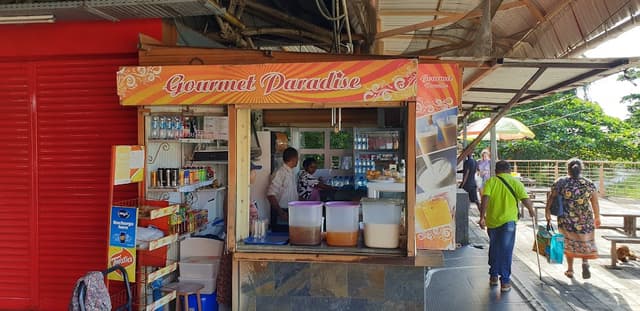
Budget Activities in Rivière Noire Region
- Cascade Gollum (next to Black River Gorges)
- Gollum trail (Grand Gorges)
- Alexandra Falls (near Cascade 500 Pied)
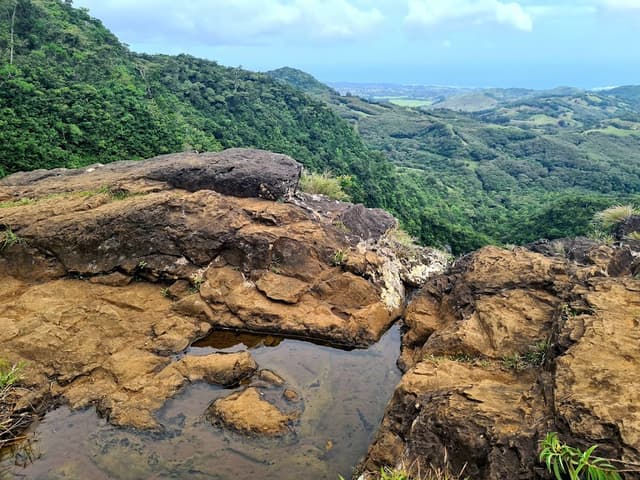
- Cascade Chamarel
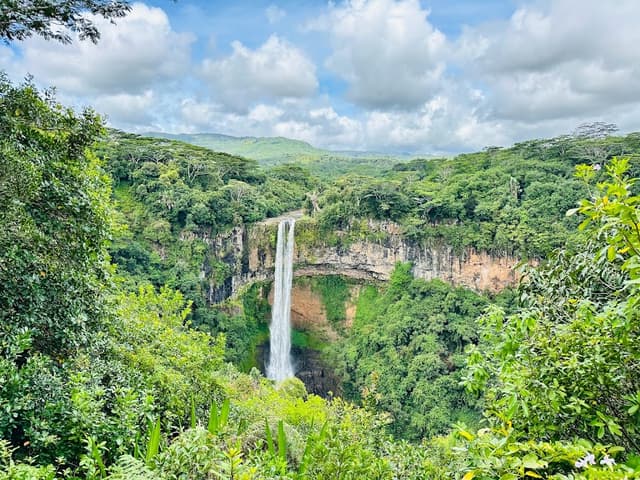
- 500 Pieds Cascade
- Mare aux Joncs (& trail)
- Beau Songes (Cascade Cascavelle or Kaya)
- Le Morne Brabant
- Montagne Le Porte
- Montagne du Rempart
- Trois Mamelles
- Montagne Vacoas
- Black River Peak (Grand Gorges)
- Corps de Gard (mountain)
- Piton canot
- Parakeet Trail (Plain Champagne)
- Machabee Trail (Petrin)
- Black River Gorges National Park
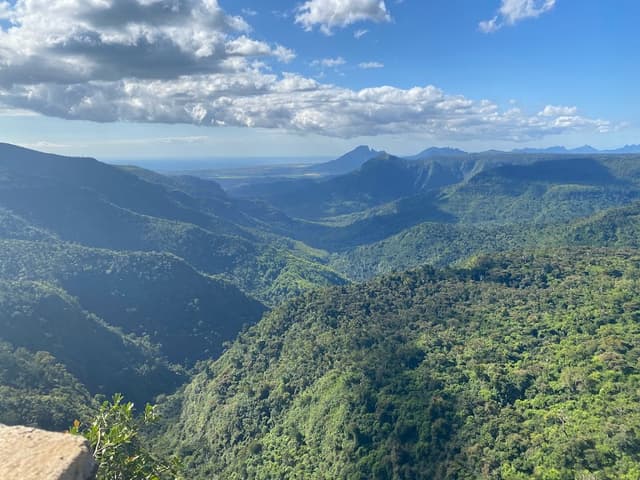
- Ebony forest
- Mystikal Rasta Shop (Royal Road, Chamarel)
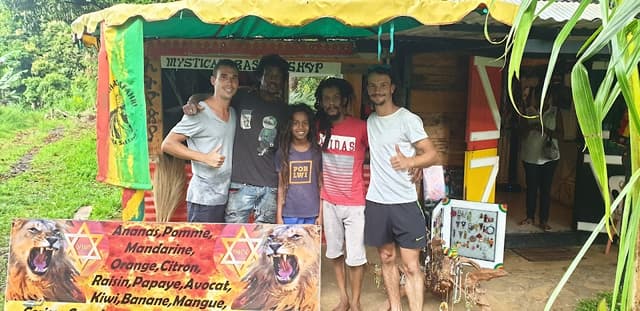
Budget Activities in Plaines Wilhems Region
- Mare Longue Reservoir
- Sept Cascade (Tamarin Falls)
- Montagne Perruche
- Candos Hill
- Monvert Nature Trail (Curepipe)
- SSR Botanical Garden (Curepipe)
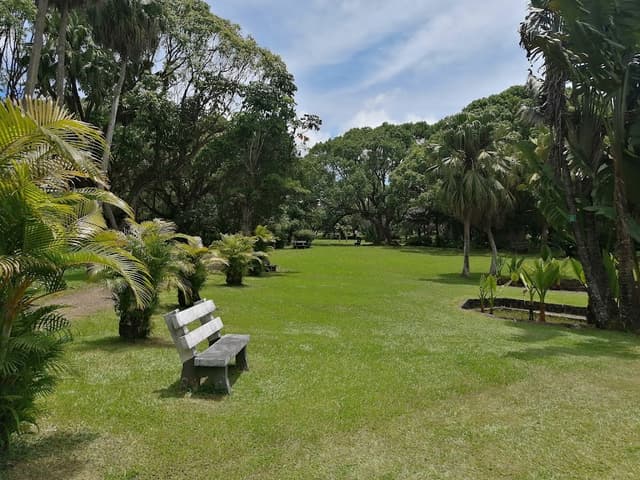
- Balfour Garden (Beau Bassin/Rose-Hill)
- Sophie Nature Walk (at the bottom of the big forest road in Grand Bassin- also near Mareaux Vacoas)

- Ganga Talao Temple! Bring some incense and fire along. Clothes should cover shoulders.- At the bottom of the road of the Ganga Talao, is a sign for Sophie’s Nature Walk. This windey road also has many viewpoints to stop off at, and make a cool place to chill on a Friday night, blasting some music and some doobs, whilst overlooking the views.
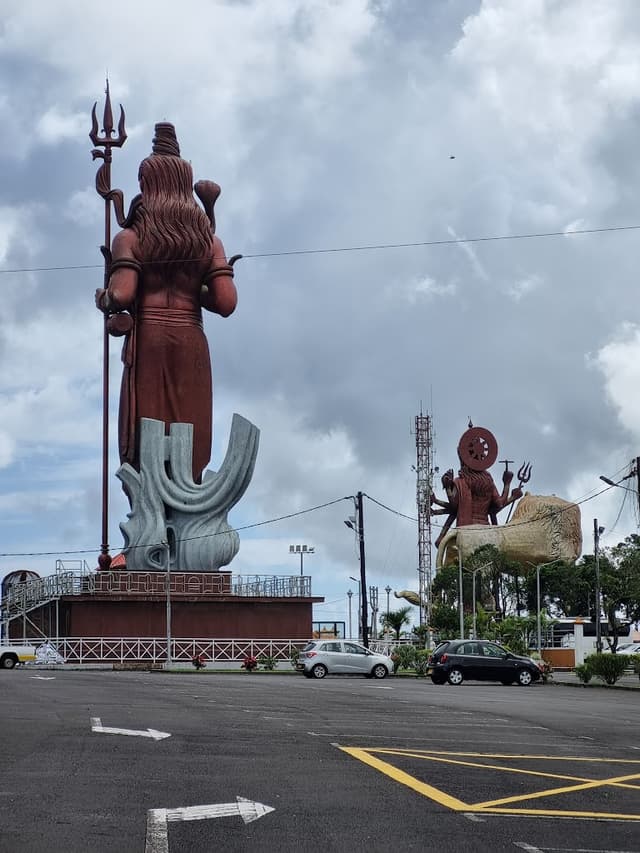
- Trou aux Cerfs (tours are expensive so try make friends with someone with a boat. Or just speak to a boat owner and offer them RS50 for a trip. They usually are happy to oblige.)
- Glass Gallery (John Kennedy Avenue, Vacoas-Phoenix)
- Quatre Bornes Market
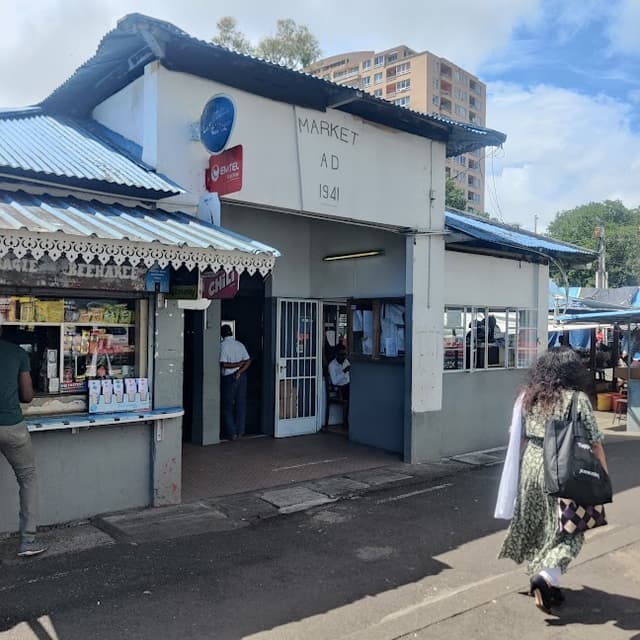
- Vacoas- Phoenix
- Floreal
- Rosehill
-Curepipe
Budget Activities in Grand Port Region
- Cascade Edouard (Deux Bras)
- Cascade Khulpatea (Grand River South East)
- Eau Bleu (in Cluny- ask for directions as no signs)
- Montagne Le Grave
- Montagne des Creoles
- Montagne Lion
- Montagne Bambous
-Sir Colville Deverell Bridge & Colville Cascade (Sorez) Pont Colville
- Valleé D’Osterlog (Cluny)
- Le Valleé de Ferney
- Ile aux Aigrettes
- Mahebourg Bay (Waterfront and Market)
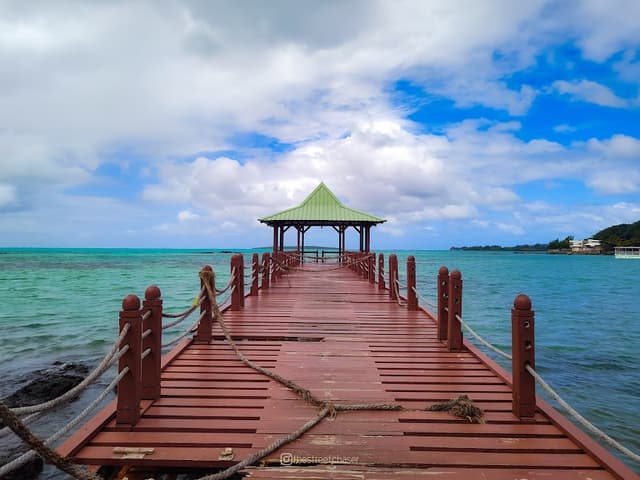
- Pont Naturel
- 7 Pyramids (Plains Magnein)- I don’t even know why these are a thing. They’re not fascinating or cultural.
- Rose Belle town
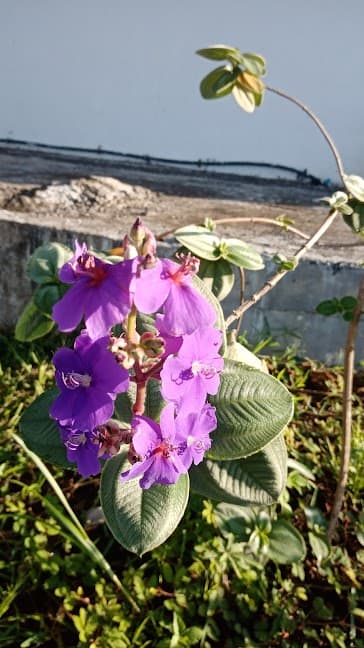
- Le Morne (mountain). A story about the naming of Le Morne. Back in the day, when the French were using foreigners as ‘indentured labourers’ (now to be local Mauritians themselves)- and, after a bit of resistance, some ‘labourers’ ran away to the nearest mountain, now called Le Morne. During this time, the resistance has worked and some owners had began freeing their labourers. So when police officers were sent to the mountain to fetch the runaways and tell them they’ve been freed, the labourers got frightened, seeing the police running up the mountain. So, the labourers jumped to their deaths, thinking they were going to be recaptured, and choosing death over their working conditions. Le Morne translates to Death. This mountain is beautiful to climb for sunrises and it’s also a beautiful beach to swim at, overlooking the mountain. The history makes it a powerful place to be.
Budget Activities in Savanne Region
- Cascade Cecil
- Cascade Rioux (La Flora)
- Cascade Jumeam or Cascade 400 (Madam Bel)
- Mamzelle Waterfall (La Roche Qui Pleure (The Crying Rock) in Souillac. Great place to chill at for a sunset or even some sundowner yoga.
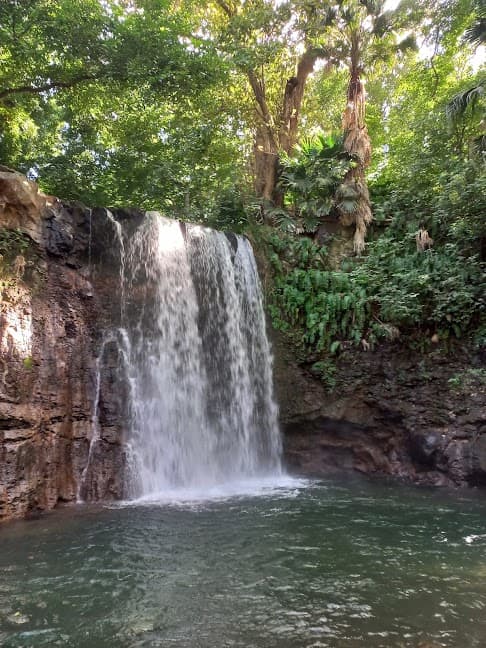
- Bel Ombre (Watook) trail (Plaine Champagne)
- Fixon Waterfall (via Bon Courage Forest en route of the Bel Ombre (Watook) trail.
- Bon Courage Forest
- Senneville Cascade (next to Rivière des Anguilles). It’s a rocky pathway to get there so be careful with your car!
- Cascade Leon (also known as Exil) near Saint Aubin
- Mount Surinam
- Piton Savanne
- Les Valleé des Couleurs

- Le Souffleur (viewpoint- not swimmable)
- Le Gris Gris (viewpoint, not swimmable)

- Rochester Falls (entirely swimmable and chillable)

Budget Activities in Pamplemousses Region
- Montague Longue

- Montagne La Nicolier
- Montagne Des Signaux
- Quoin Bluff
- Montagne Calebasses
- Powder Mill Nature Walk (near SSR Hospital)
- SSR Botanical Garden
- Creve Coeur

4 + Weeks - Suggested Route (to see everywhere in Mauritius)
Below is a suggested route which fits in everywhere to visit in Mauritius (the great places and the not-so-great places, yin and yang), suggested activities and recommended advice for each of the places. The trip doesn’t have to be done in this way, however, this is the best way to travel the cheapest and to save money where you can (e.g on transport). There are some activities which haven’t been written here, but you may find online- this is because I didn’t go either due to 1) too expensive, 2) didn’t agree with it (zoos, etc), 3) wasn’t cultured enough (theme parks) or 4) it didn’t appeal to me. I’m not going to write about what I don’t know about, so there’s some information you can find out yourself when you’re exploring!
You can use the Couchsurfing app for this route, to find free/cheap accommodation with local people. This route can be changed, or finished either way (starting at opposite ends). I have also included a camping checklist below the route, of items I needed when camping and travelling. Let’s just say I overpacked at first, so I know exactly what I use and what I don’t, which means I travelled lighter than I began with- so it is a streamlined list. Mauritius is so cool to backpack on a budget as you have plenty of beaches *(and beach forests)* to camp in. Which means you’re guaranteed to have an undisturbed, quiet nights rest, accompanied with the stars and sounds of waves.
Word to the wise: Always suss out where to camp in the daylight and when camping on the beach, make sure to not be low down, or too near the sea, where the tide will get you and take you out. Common sense, simple common sense. *Be careful of some of the grounds of the beach forests as the filaos trees can drop sharp seed things, which won’t be comfortable in a tent.*
~You will arrive at Sir Seewoosagur Ramgoolan Airport in Mahebourg (pronounced Mye-bour)- South-East of the island. This guy was the first prime minister of Mauritius in 1967. From the airport you can either head to your hotel (if booked and arranged) or straight to Mahebourg beach! Chill out there, catch some rays and suss our where to camp.
~Waking up in Mahebourg, it’s time to either explore Mahebourg or pack up to start making your wayto the next place. Remember, Mahebourg is the closest place to Ile aux Aigrettes, so if you want tohit up this little island and camp on it for a night then you can! It will cost money though as you’ll have to book through a company. However, you could get the price lowered if you are providing your own tent and/or food. From Mahebourg, you can go to Grand Port via Rose Belle using the B7 road.
~Rose Belle has great locality to the ‘seven coloured earths’, to Blue Bay beach and Pont Naturel. You can also visit La Vanille Crocodile Park. You can camp at Grand Port beach tonight. Waking up fresh, you can climb Montagne Bambous, a short drive away- or if you prefer to, you can skip it and climb Montagne Blanche instead. Montagne Blanche is a fun climb, with the hardest part being the beginning (you have to go through some bushes). It’s about a 1 hour 20 minute climb.
~Montagne Blanche is a little further than Montagne Bambous, so logistically you could climb Montage Bambous while camping at Grand Port (not forgetting the Val Nature Park in nearby Saint Hubert), then making your way to Grand Sable, while climbing Montagne Blanche en route. Montagne Blanche is actually a really nice place to camp, so you could miss out on Grand Sable for the night.
~Next up is Bel-Air (via the B27 road), where I visited the Siva Soopramanier Kovile Bel-Air Riviere Seche temple and finally got some dholl puri. Bel Air is a cool place for a drink in a local bar and for a little explore- plus it’s very near Trou d’eau Douce beach. You can camp here and go on a boat trip to visit Ile aux Cerfs for the day. Packages include the boat trip, drinks, and lunch. You could book with a package or you could find a local boat guy who would take you for a little fee. Now you’re in the Flacq district, there is a little more civilisation.
~You can visit the Flacq Coeur de Ville mall and buy some dholl puri inside, have a look around the shops, or people watch with a coffee. Centre de Flacq is the place to be for some hustle and bustle, boutique shops and market stalls. It’s very hot in the days here- like Port Louis. It’s a really nice vibe here and worth staying a couple days for. Enough of people- now you can keeping move up the island for some more nature.
~En route up the coastline is Belle Mare beach (one of the bluest oceans I’ve seen), Pointe de Flacq, Poste de Flacq and Poste Lafayette. You’ll see my reviews of these places below, but these areas are really beautiful for views! Belle Mare and Poste Lafayette is swimmable, but the other two aren’t.
~You can hit up Bon Accueil en route to Roches Noires. Roches Noires translates into ‘Black Rocks’ so the coasts are really beautiful here! Now moving onwards, we’re leaving the East and hitting The North, which means increased prices, louder nights, more people and bright lights.
~I suggest hitting up Poudre d’Or en route to Goodlands. As written about above, Goodlands centre is a vibey place to be. It’s got great market stalls and boutique shops and loads of street vendors selling made-with-love food. Goodlands has nice events going on sometimes, so check on Facebook and other platforms. We’re almost at the top of the island, but before we reach, we get to visit good ol' Grand Gaube.
~Grand Gaube is a quiet at night on the beaches and is a safe place to camp, with a massive choice of tiny beaches to choose from! It’s vibey in the evenings (mainly weekends) so you can make friends and have a drink and smoke with all the friendly people! GG has my heart. There are beautiful marshlands behind the village, just follow the road straight past the church, then follow the track road (and the cows). It also has a secret little vine tree forest with climbable trees and swingable vines, near the rocky part of the marshlands, where many cows graze.
~There’s a cool bar called Di Sab, which serves cheap drinks and a good vibe- plus the décor is really nice! From Grand Gaube, you’ll be close to the Grand Baie area- quite expensive drinks and lots of tourists. The beach is nice here to swim and to chill, and because of the tourist vibe, everyone’s always drunk and really fun to get along with. I don’t suggest staying in Grand Baie for long, but you can check out the Grand Baie Coeur de Ville mall and La Croisette Mall but unfortunately there’s no mountains here so you can either swim or shop here. I must admit, the beaches are really beautiful here so definitely use it for a recharge beach break. From here, make you’re way to Pereybere via the B13 road.
~Pereybere is one of the best swimming, scuba diving and camping beaches in Mauritius. It’s big which makes it super safe, and it’s near enough to people just in case. It’s a safe place to swim at night, however, don’t go out too far as there are sharks in The North!
~Mon Choisy naturally follows on from here, along the coastline or coastal road and is one of the best beaches to swim at. It has crystal clear waters and white sandy beaches. Also a beautiful place to camp due to all its little hidey holes along the beach. Mon Choisy has a variety of things to do such as Mon Choisy Mall or Maheswarnath temple.

~Moving downwards along the South-West coast I stopped off at Trou aux Biches for a fantastic swimmable ocean beach . You can also visit Triolet en route to Trou aux Biches, along the A4 road. Triolet holds Temple de Triolet and Ved Hollistic Care Centre, which provide Ayurvedic courses and retreats.
~Make your way to Pointe aux Piments, for some tasty food from ‘Sunset Filaos’ (Filao trees are a common tree found at most beaches, on the sandy mud terrain, before the ground turns to a sandy beach. I mentioned this place in the ‘food and eateries’ section. Pointe aux Piments is such a cool place because nearby you have the Riviere Citron (River Lemon). At Riviere Citron, there exists aquaint river and beautiful mini waterfall, where people come to fish or chill at times. It’s a beautiful place to climb and chill, or get into the water itself. A secret gem I absolutely love- shown to me by my ‘nevei’ Luveen! Point aux Piments is a great place to camp as it’s much quieter than other beaches- especially in The North!
~Terre Rouge is a cool place for Bois Cheri Tea Factory and Museum for RS300 (£6), and you can easily get a bus to Port Louis from here.
~Baie de l’Arsenal and Baie du Trombeau are en route to Terre Rouge where Port Louis, the Capital, will be close by. At Baie du Trombeau, you have a nice beach viewing point but not much else. Also, in the town, there is a banging ‘mine’ (noodle) bar! I don’t know the name of it or where it exactly is- but when me and my Couchsurfer friend Fabrice broke down near there, it was a blessing to be so near this quaint noodle bar on the corner- while a local fixed up our car.
~With Port Louis being the capital- there are plenty of things to do/see here (check the ‘Lit Locations’ section above). I don’t suggest camping in Port Louis due to the heavy amount of people- I personally deemed it ‘not a smart decision’. You can find budget motels online in Port Louis for $10 or under (or so the website says). I never slept in Port Louis, so I can't speak too much about it, however there is something available. But it would be cooler to Couchsurf there for a better experience and to explore Port Louis on a deeper level.
~Port Louis is one of my favourite capital cities- I like to call it ‘Little India’. It’s so busy and loud, cars are squashed up against one another, everyones taking up space so some sacrifice the pavement for the road, there’s crowds of people ‘queueing’ up for food from basic looking food huts and everyone’s shouting and honking horns and looking and seeing if you want a taxi ride. Yet it seems like an organised chaos. Everyone knows the food ordering routine, people queue up against the walls as not cause as little disturbance and there seem to be no accidents with everyone driving squashed up. Port Louis brings a little harmony to me as it’s a great place to people watch (especially when waiting at the bus station). The bus station in Port Louis is at Deschartres Street, it’s huge and you can’t miss it. The buses will be going in all directions to all sorts of places such as Rouge Terre, Nouvelle Decouverte, Rose Hill, Quatre Bornes, Curepipe, Quartier Militaire and Goodlands.
~So I made my way to Pointe aux Sables (to the South East of Port Louis) to stay at the beach which was quiet and safe. In the morning, I went to Albion to see the lighthouse and spend a day swimming in the rock pools. Normally the lighthouse gates are closed (I got entry on a separate time for my cousins to take pictures for their wedding), but they do open the gates occasionally for the public so keep your eye out! There’s truly beautiful views from here.
~From here I went to Bambous (great for markets and picking up weed), and made my way to Flic en Flac via the A3 road through Medine, though I didn’t stop in the latter.
~Flic en Flac is a touristy place as discussed elsewhere in this guide. You’ll feel the vibe change though it’s sometimes nice to be around lots of people who want to party, especially if you’re travelling alone. Flic en Flac is also more expensive than the average place. There’s restaurants and bars and clubs and supermarkets and a beautiful beach (my favourite thing about Flic en Flac). Have fun playing with the sea cucumbers (literally soft sea dildos you find in the water), in the white sands and the blue Indian Ocean. See other information about Flic en Flac in the ‘lit locations’ section.
~From Flic en Flac, I made my way to Tamarin via Riviere du Rempart. I didn’t camp here, instead I continued to Tamarin and camped on the beach for the night. Tamarin is a very touristy place as many hotels are there, but that means lots of small private beaches you can camp on! It is a safe place even though there tend to be more people around.
~I spent a few days in the Black River Gorges camping and climbing. You can ask Ashwin to take you hiking and camping too, depending on his schedule. At least you can be shown deeper and more exhilarating places to camp as you won’t be alone! In this district you have the nearby Grande Riviere Noire and Petite Riviere Noire which are the nearby towns for supplies (depending on what part of the gorges you are in). Remember, the gorges are vast! It’s easy to get lost in them and can be dangerous so don’t camp or climb alone. Some mountains within these gorges are so steep they’re practically 180 degrees. The Black River Gorges are honestly a firm highlight of my trip as the climbing was immense, but the views, adventure and surprises on the way were as equally immense! You don’t have to be an avid hiker to come here, as there as many different type of trails and climbs, which means there is something for everyone.
~Now we get to the South of the Island- one my my favourite areas! From Chamarel or Petite Riviere Noire you can take the B9 road to La Gaulette- which holds a small mall and some restaurants. The road from here to Le Morne is a beautiful one, whether on a bus, a car or on foot. Look out for the cool paintings on the trees coming down here! Le Morne is definitely a place I could’ve spent months in! This cool sleepy village has a surf type vibe to it and is more popping than Baie du Cap itself, because it has more younger people. Le Morne is a place where you can swim, chill, watch the nicest sunsets or climb Le Morne’s mountain itself. The people here are friendly and relaxed and always down to meet new people. I had a blast in Le Morne. Remember to read about it in ‘Lit Locations’ for the phone number of a kite surfing friend- Miguel! You can camp at either the foot of the mountain or on the beaches safely.
~After dragging myself away from the dreamy village of Le Morne, I made my way to Baie du Cap where I was volunteering for 3 weeks. I stayed in an apartment for most of the time, however, did spend a couple nights camping on the beach and sleeping in my hammock too. I tucked myself away at the end of the walking strip (before the beach becomes more rocky). I was undisturbed all night. Baie du Cap is just as good a fishing village to meet people, have some downtime and be amongst the ocean. There’s a nice ‘mine’/noodle hut in Baie du Cap called ‘Mo Filaos’ and a lovely local lady runs a Mauritian curry hut next to ‘Chand Restaurant’. ‘Indies World’ is on the road leading from Chamarel to Baie du Cap.
~From Baie du Cap, you now have a coastline of beautiful beaches and beach points to see for some beautiful sunsets. Bel Ombre is also a gorgeous point to stop at for a sunset or for cooking your dinner there. After Bel Ombre, and still following the coastline, I stopped in Surinam beach and then went to the Riambel vortex, proceeding to sleep at Riambel beach (it’s flatter and further out than Surinam). I suggest spending a night at Riambel (you could even camp in the vortex itself!).
~When in this area, I visited Souillac and Le Gris-Gris. Gris-Gris translates into ‘grey grey’ and it’s a very calming place because of the sounds of the crashing waves. It is an unswimmable beach due to the rocks, harsh waves and strong undercurrents, but that didn’t stop ya girl from trying! But seriously, it’s unswimmable. The great thing about Gris Gris though, is that is has this vast forest behind it and a cool hill which means there’s many camping opportunities here in this beautiful part of the island. You also have close access to Riviere des Anguilles, a beautiful place for some freshwater flowing and spending time amongst the rocks.
~Now I had made it all around the island and have seen all the nature of the island, it was time to experience the inner city part of Mauritius. The good thing is that on this route, you end up back at Plaine Magnien/ Plaisance, which means you can get the metro from nearby Rose Belle; cutting through the island and stopping at each main stop in Rose Belle, Curepipe, Quatre Bornes, Rozil and Port Louis.
~Each town has a different vibe so they’re all nice to explore. You can return on the train back to Plaine Magnien/Plaisance to get a flight to whenever you’re going to next!
~Alternatively, you can blend these cities in within your coastal route, except you might spend more money on transport! Check out the ‘lit locations’ section to see information about each of the main towns.
Camping List- Essentials and all
My essential camping list is stated below which includes all the necessities for camping in Mauritius (exc. cooking materials). I bought these items mainly off Amazon (hate em but use em), for a relatively cheap price. I didn’t go crazy with anything as I couldn’t afford too, yet I still managed to purchase high quality and long lasting materials (2.5 years and still counting)!
- Sleeping bag (a decent one which survives to around -5 degrees Celsius. This will keep you warm on cold nights, which are most as it’s colder when you sleep closer to the ground.
- 1 or 2 person tent. I personally have a 2 person one but it’s because it’s a little roomier, but doesn’t sacrifice the weight or price of it, so it’s worth it. I bought mine from 'Go Outdoors' (link below) for only £22.99. It’s good for all weather, however, in heavy rain it does rest on the tent walls, which feels horrible when you sleep against it. Other than that though, my tent does me wonders and I had no complaints about the rain because it wasn’t often enough.
- A blanket. Obviously used to stay warm when sleeping. You don't want a bulky one, but word to the wise, you will receive a thin one as part of your 'plane pack' on the airplane and I just used this throughout. I didn't bother buying my own, however, if you do, ensure it isn't bulky and will dry quickly and is easy to clean if needed.
- A yoga mat. This is a life saver. You can use it as a yoga mat, a sleeping mat, a resting pad, a clean area, an exercise pad, or rolled up as a pillow (for long bus journeys and that). This is a multi-purposed essential. I got given mine by Ashwin, but you can buy these for around £15+. Even though the thicker the comfier, you don’t want it too thick to a point where it is bulky when rolled up.
- 2 x headlamps. Again, these were from Amazon, but 2 is essential. They don’t last ages (though you can get ones which do), but long enough to use them a couple times per charge. They’re small enough to carry two without taking up room, plus having two saves you from worrying about charging them constantly. My headlamps have several settings for different brightnesses, colours and flash speeds. Headlamps are useful for a multi of things such as setting up tents or cooking in the dark, looking for things in general in the dark, providing some light when you’re chilling, reading, journalling or eating (or swimming in the sea at night), and are essential in a night time or a dark emergency. The smaller the battery, the less time it takes to charger, but the quicker it runs out. Make the right decision, but whatever you do, don’t get caught out without one!
- A hammock! My hammock is an essential item for me. It’s cool to be able to set it up in a nice space, where you can smoke and read and chill in the sun or the shade or even nap for a while. It’s also reassuring to know you have a ‘backup bed’ in case shit hits the fan, however, this won’t save you much when it’s pouring with rain or in an area which lacks trees. Getting this out and setting it up is appreciated by a lot of other people as well, who enjoy using it just as much. I’ve met many people where it’s been their first time on a hammock! Good times!
- A first aid kit. Ensure it has the essentials such as disinfectant (spray and wipes, bandages, plasters, tablets and medicine (if you’re into them) and the other essentials. I purchased the ‘Adventure Medical Kits Ultralight 9’ for £14.99- because it seemed complete and non expensive, is light and waterproof. I bumped it up a bit with some bits my nurse friend took from the hospital for me. Again, don’t get caught out without one. I don’t have to explain why. Also, don’t get caught out without travel insurance!
- Travel insurance! Make sure that shit’s booked up and verified. Considering the price (around £500 for one year), it’s worth it in case of any medicinal situation. Using it once would’ve paid for itself already. I personally used World Nomads. World Nomads is reliable, reasonable, vast in coverage and fast to purchase (see link below).
- Scrubba washbag, soap bar and/or washing powder. Save money on washing clothes with this cool ass washing bag. I used mine all the time and it costs next to nothing to wash your clothes. I bought this from Amazon for about £30- a SOLID investment.
- Hiking boots. Ordered them from the big ‘A’ (A as in Assholes). I actually received them as a leaving present from my Mum which I’m forever grateful for as I’ve used them in various situations. They cost around £25 from Amazon), and are sturdy af. I’ve received, and continue to receive many compliments on them, mainly by hench army type farmer men lol.
- 2x thick socks for when using the hiking boots and as a pair of fluffy socks when you need warm feet.
- Big pack of hair bands, soap box, nail brush, soap bars, face wash bars, shampoo bars, a (water) bottle of coconut oil, mosquito spray, toothbrush, toothpaste, moisturiser or aftersun, box of tampons, pack of sanitary pads, condoms, nail clippers, tweezers, small makeup bag with mascara, lipgloss and bronzer, my rings, a small bag of different earrings (I change them depending on my vibe), empty notepad(s), a couple writing pens. This can change depending on your preferences- men, you can leave the tampons at home! Women- tampons and pads are fairly expensive so better so buy for cheap and in bulk in your home country and bring them with you.
- REUSEABLE WATER BOTTLE- as a human and traveller of this Earth, it’s important to reduce one-time use plastic. The one I bought was foldable and collapsable too, so it only took up space when it was full of water and had keychains attached so I could hang it off my bags.
- A hooded jumper big enough to keep me warm when needed either in a tent or on a bus or in the evenings, also used as a blanket in many situations. Also long sleeved so it prevents mosquitos at night.
- A pair of leggings or cargo trousers or both. Leggings are thermal and moveable and can be used for pyjamas if it’s cold, whereas cargo trousers are long, full of pockets, moveable and stylish so can be worn out and about if it’s chilly- or in the mornings when it’s chilly. Leggings are annoying if you’ve just moisturised though, which you should be doing in the Mauritian sun.
- A long sleeved T-shirt to use as a thermal
- 2 pairs of shorts (1 x flowy and 1 x cycling shorts)
- 2 short sleeved T-shirt’s
- Some underwear and a couple of bras (I switched to bikini tops in the end because of the material rubbing in the heat)
- A big pyjama top and pyjama shorts
- Flip flops (just 1 pair is enough). They are cheap enough in MRU to buy again if yours end up breaking or hanging on by a thread!
- A bikini
- A microfibre towel
- A backpack big enough to fit all this in. I got given one by my friend which she used in Thailand. I ended up sending her pictures of the backpack 'in action' in all different locations. It is strong, sturdy and I couldn't have found a better one to use. I had a large backpack for y main gear and then a smaller day backpack which I would bring out with me so I didn't always have to carry my luggage. Plus I could attached the day backpack to the outside of the large backpack so I could carry them as one piece. I also have a bum bag (small shoulder bag) in which I kept my purse, passport, phone, etc as sometimes I didn't need a backpack at all. All bags I have had has loops and hooks so I could hang a stuff a lot- this really comes in handy. The Berghaus Motive 60L+10L Travel Backpack is what my friend gave me and is what I use to this day (3 years of solid backpacking later). Click on the link below to see it in all of its glory.
This is the essential list you’ll need. Anything extra (which fits in the backpack) is a bonus! I repacked about 10 times before leaving and got rid of loads of clothes, but also gave away about half my clothes in Mauritius (I reallyyyy overpacked). This is a lesson you’ll learn during travelling though retaining what serves you and brings you value, and cutting off all materials which no longer serve you or bring you value. It’s very cathartic letting go of belongings you think you need, when really you just need the idea of it to make you happy. Letting go of these materials opens the realisation that we are the users of the item for a designated period, then, when it has served you, it moves onto the next user, to give them joy and pleasure. Obviously if you’re camping you will likely be cooking your own food (cooking supplies and ingredients needed) or buying cheap ass street food!
Language Bible
Below are some simple and common phrases you will need to use to get around the island eith ease as not everyone speaks English. They are easy to learn and even harder to pronouce, but learning how to speak basic Creole goes a long way and gets you a better deal (whether for making bargains or making friends). Plus it being a lowkey language, not universally recognised and which holds many generations of history, why would you not want to learn such a cool language!
Phrase/Word in English ~ Phrase/Word in Creole ~ Pronunciation
Hello (after morn/before morn) ~ Bonzor/ Bonjour ~ [bon-zor]
Good evening ~ Bonsoir ~ [bon-swar]
Greeting (Hindi) ~ Namaste ~ [Nam-a-stay]
Good afternoon/ Good night ~ Bon apre mizi/ Bon nuit ~ [bon app-ree midi / bonnweet]
What’s up pal/nephew? ~ Waaa neveiii ~ [wah ne-ve]
How are you? ~ Ki manier? ~ [Kee man-yeah]
Where is the bank? ~ Kot la bank? ~ [cot la bonk]
Where ~ Kot ~ [cot]
When ~ Kan ~ [kar]
Why ~ Ki fer ~ [kee- fair]
What ~ Kiza fer / Ki ~ [kee-zar fair]
Who ~ Kisana ~ [kee-sana]
What is this/that? ~ Kieter sa? ~ [kee-ter sah]
What are you doing (today)? ~ Ki ton per faire (zrdi)? ~ [kee to per fair]
What happened/ what is wrong? ~ Kin arriV? ~ [keen arr-ee-vay]
Where are you? ~ Kot to eT? ~ [kot to e-tay]
Can I have one/some…? ~ Eski mo kav ganY ene/epe…? ~ [eski mo kav gan-yay en-ay/ep-ay…]
I (don’t) like ~ Mo (pas) kontan ~ [mo (pa) kont-on]
I (don’t) want/do ~ Mo (pas) envi ~ [mo (pa) on-vee]
What is your name? ~ Kouma to apel? ~ [koo-ma to apel-ee]
How old are you? ~ Ki lage ou/to ena?~ [kee larz oo/to ay-nah]
Smells good! ~ Senti bon! ~ [sarn-tee bon]
Looks good! ~ Parret bon ~ [parr-et bon]
Where’s the moon? ~ Kot la lune? ~ [cot la loon]
My belly is full up~ Mo vent in plein~ [mo vornt in ple]
More~ Encore~ [on-core]
Enough~ Assez~ [ass-ay]
Prick/fuck ~ Gogot ~ [gog-ot]
*Numbers and days of the week are the same in Creole as they are in French, but with the Mauritian twang. The creole language changes all ‘d’ sounds to ‘ch’ sounds, so imagine saying ‘chz’ with a mouth full of bubblegum- this is how it should sound. For example, practise saying Zrdi (today) [Zorchi].*
A Closing Prayer
So that brings us to the end of this 101 Broke Backpacking Bible to Travelling Mauritius! I have expunged every relevant thing I know about travelling Mauritius on a budget for you onto this paper (leaving a couple gems for you to figure out yourself). Mauritius is a country with fun and friendly locals, great hiking spots, paradise sands and beaches, surrounded by coconuts and fruit trees, mountains and the Indian Ocean, oozing with culture and mouth watering curries. For a wholesome and quieter travelling experience, Mauritius is a perfect place to break away from Western society, and settle into some down to earth and natural living experiences. As a woman, I felt safe and as an inexperienced backpacker at the time, this country was a great place to slide into, before heading into Mainland Africa. Mauritius has a special place in my heart and I hope this guide helps you make the decision to travel there comfortably and safely (and cheaply), no matter what age, colour or sex. Luckily, the entry rules for MRU during the plandemic are more relaxed, which means it’s getting easier to enter the country and not having to make many provisions! Mauritius is ideally situated, which means if you’re still continuing to travel, you have access to many continents. Flights will be fairly expensive (depending on where you travel to next), but once your on mainland, you can travel overland very easily to other countries. May you travel light and blessed!
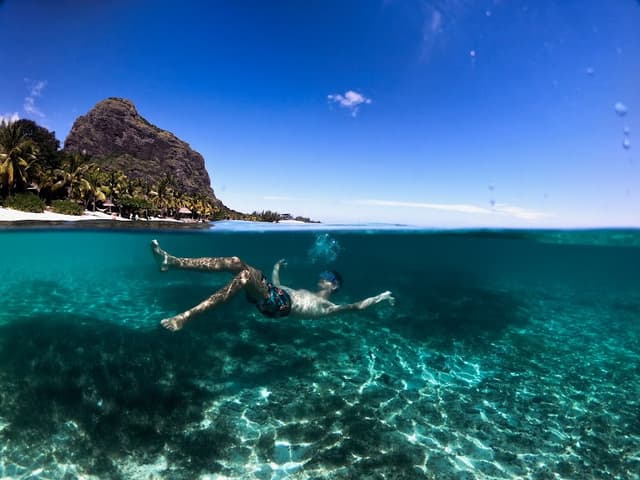
The home for unique & authentic travel
